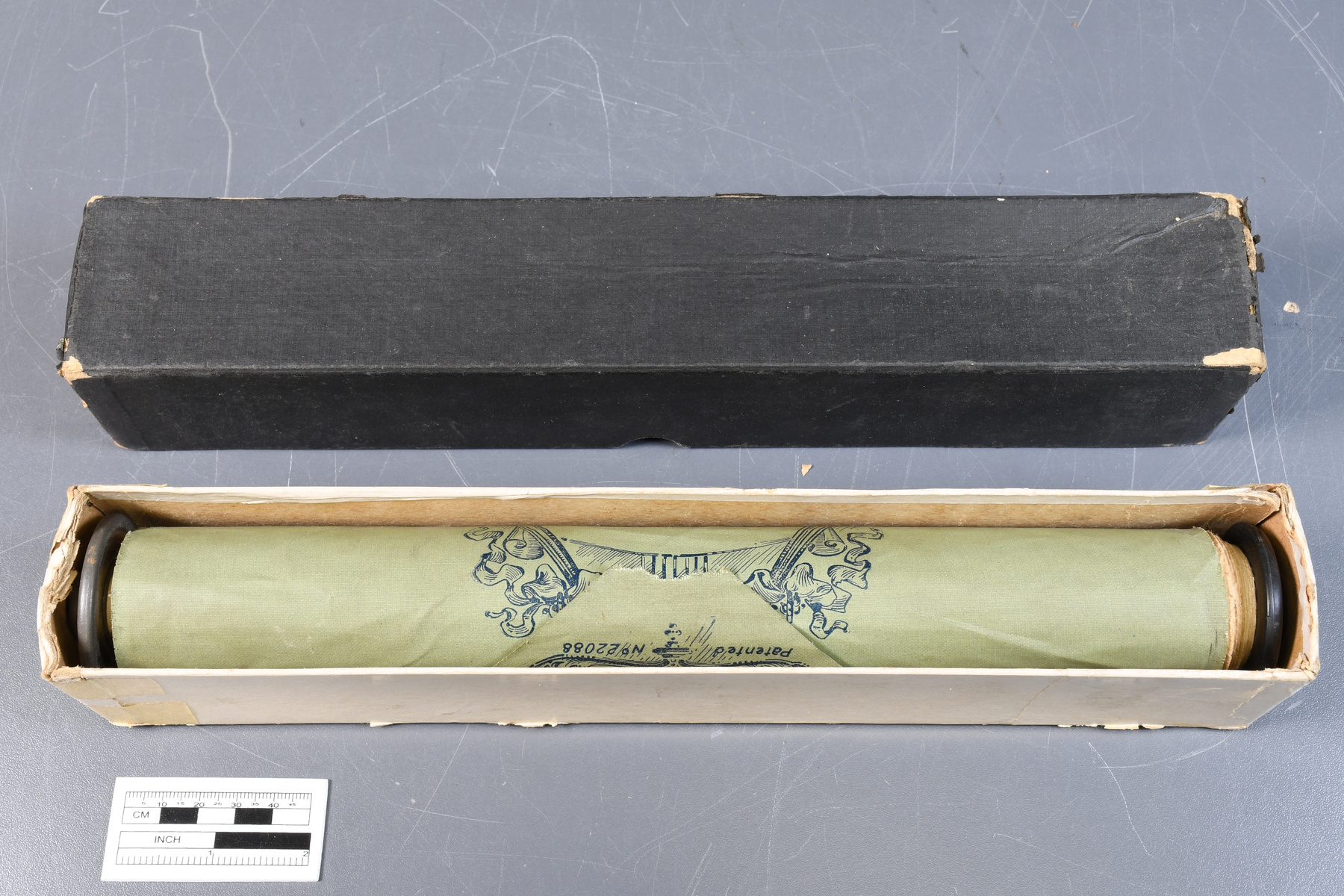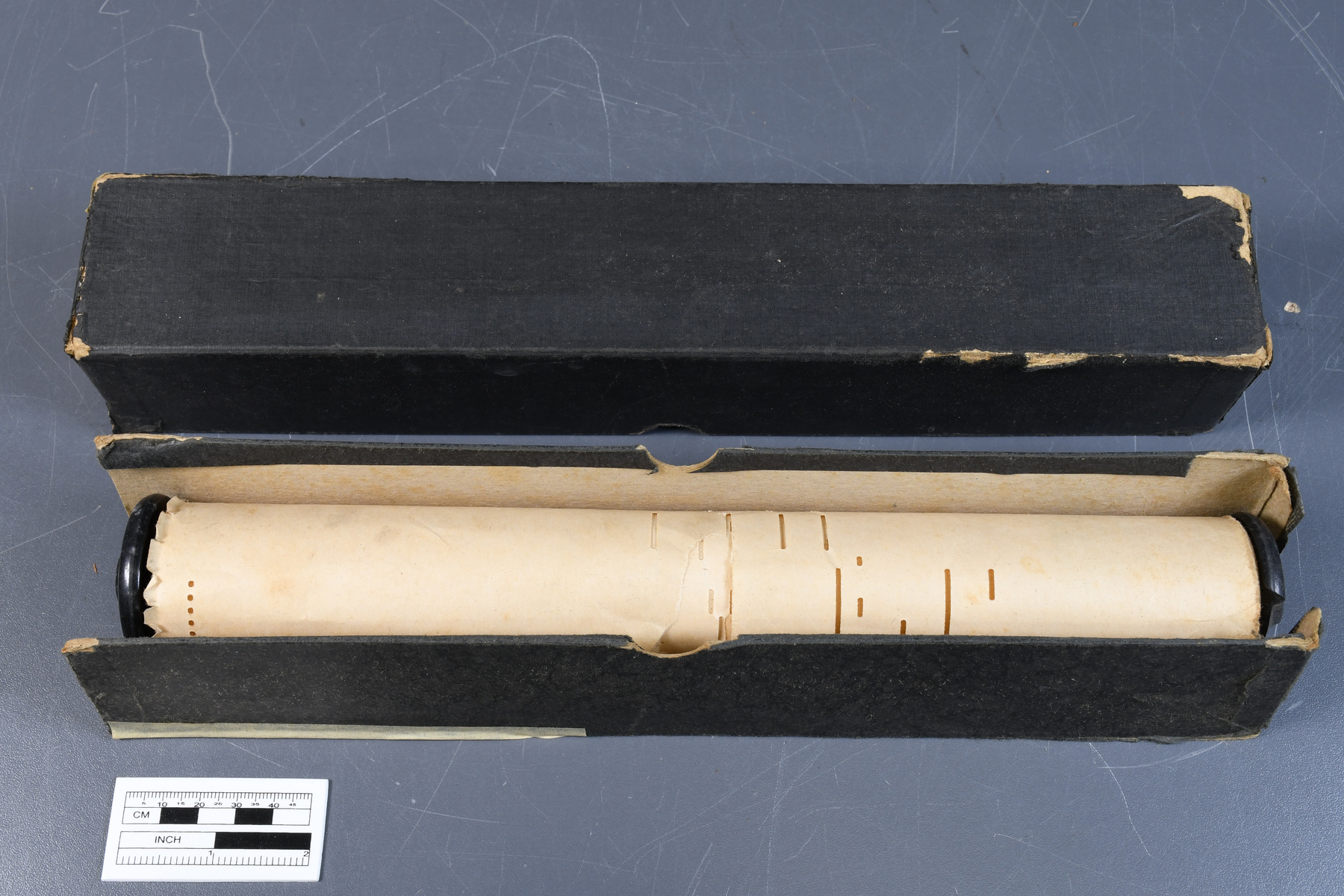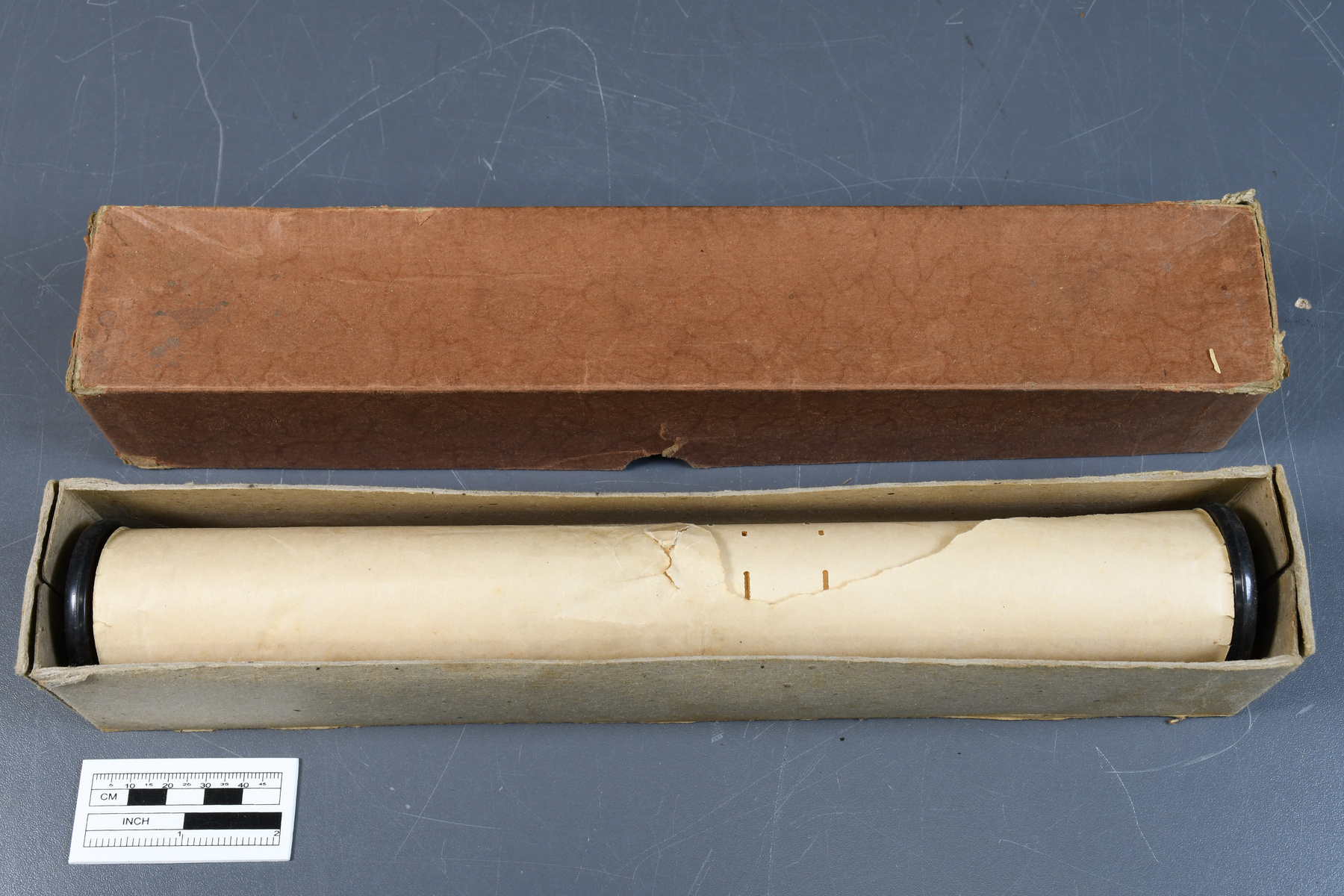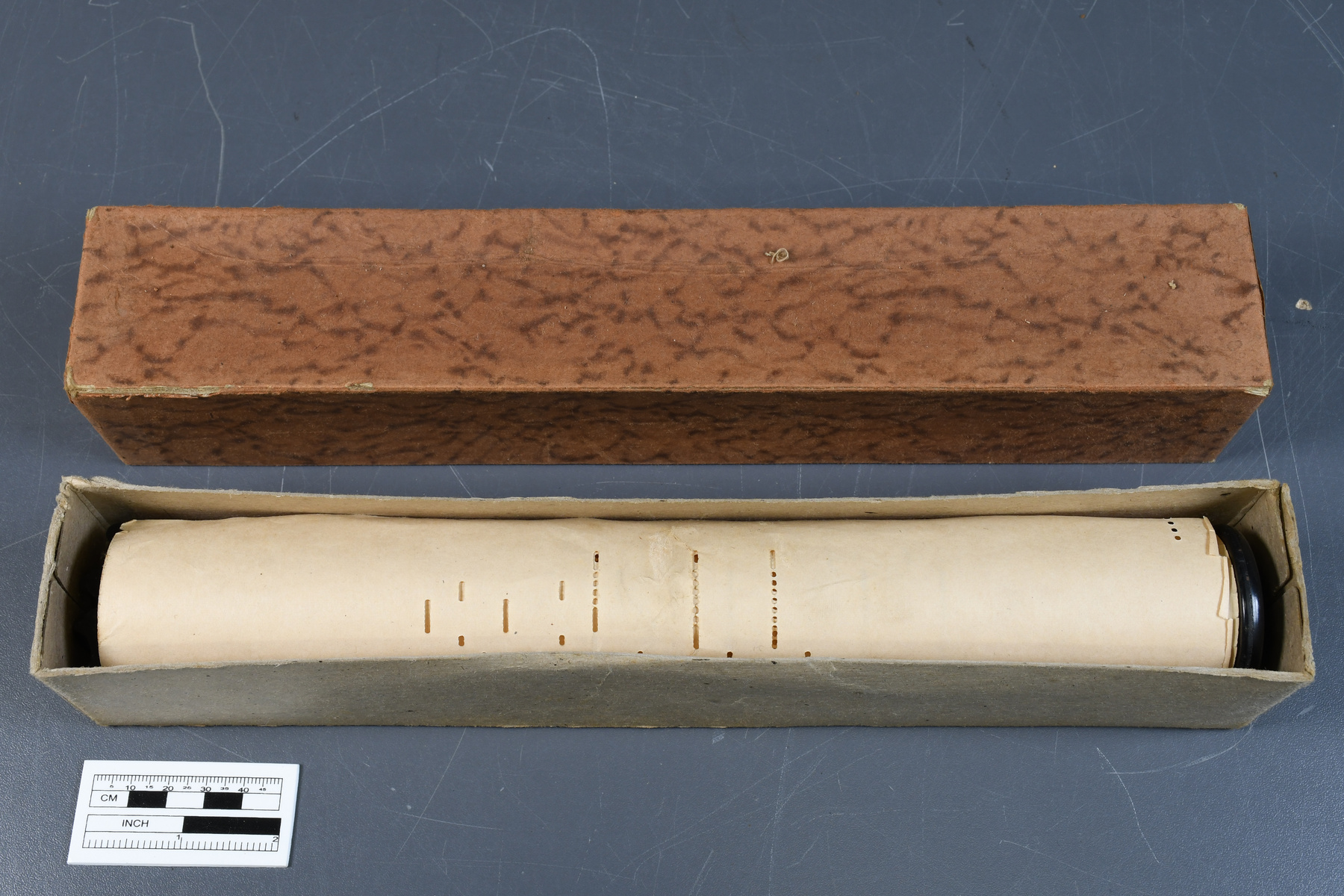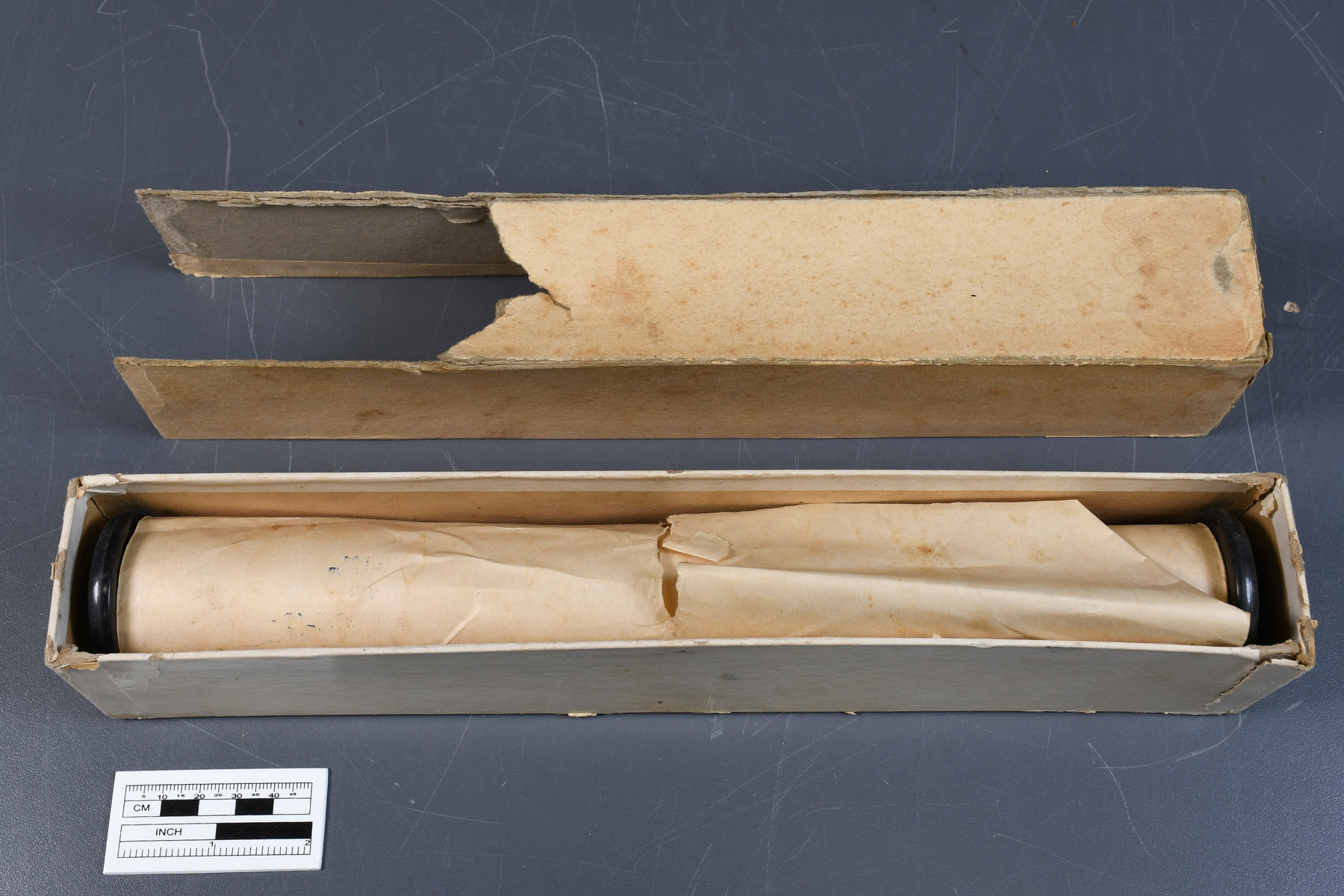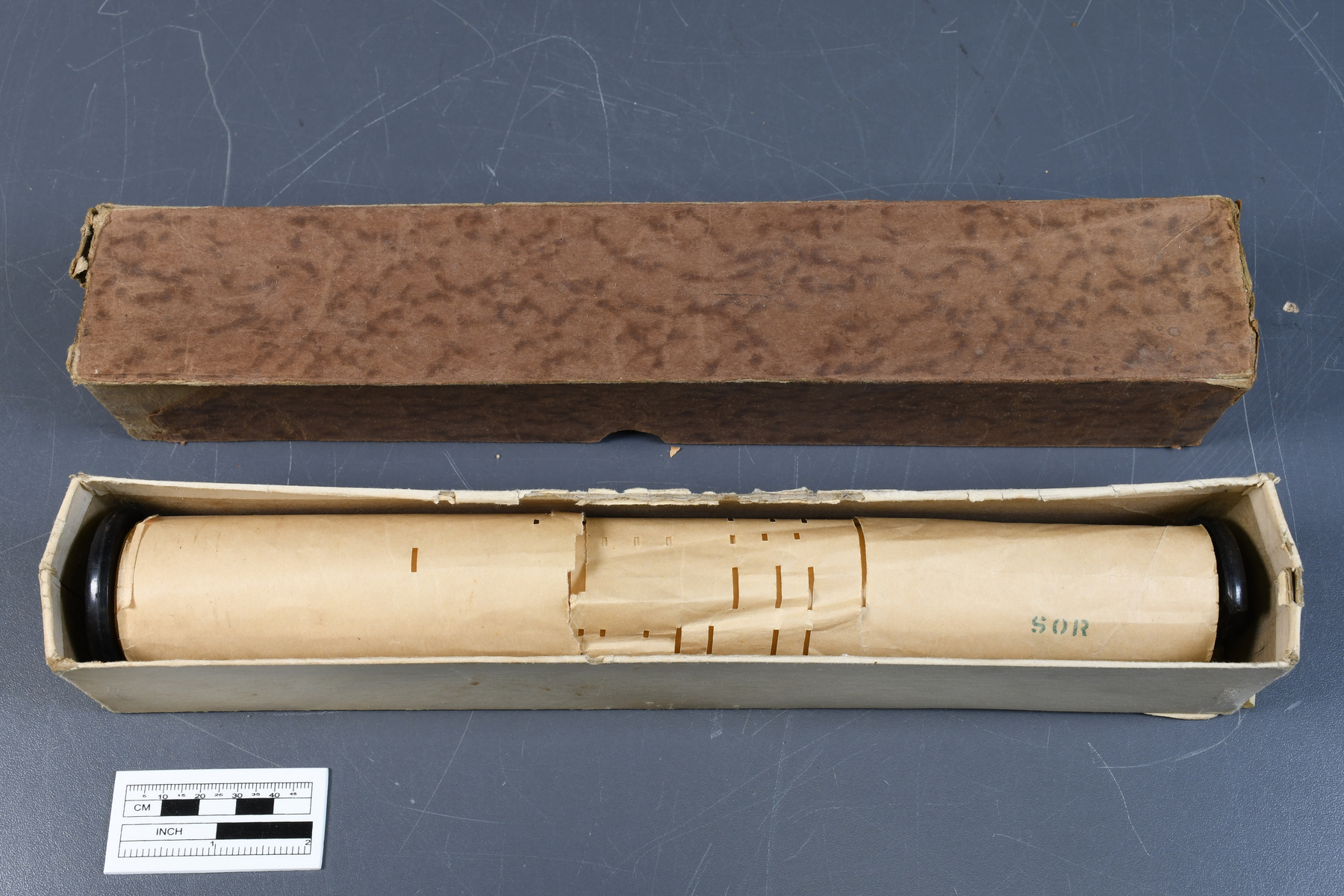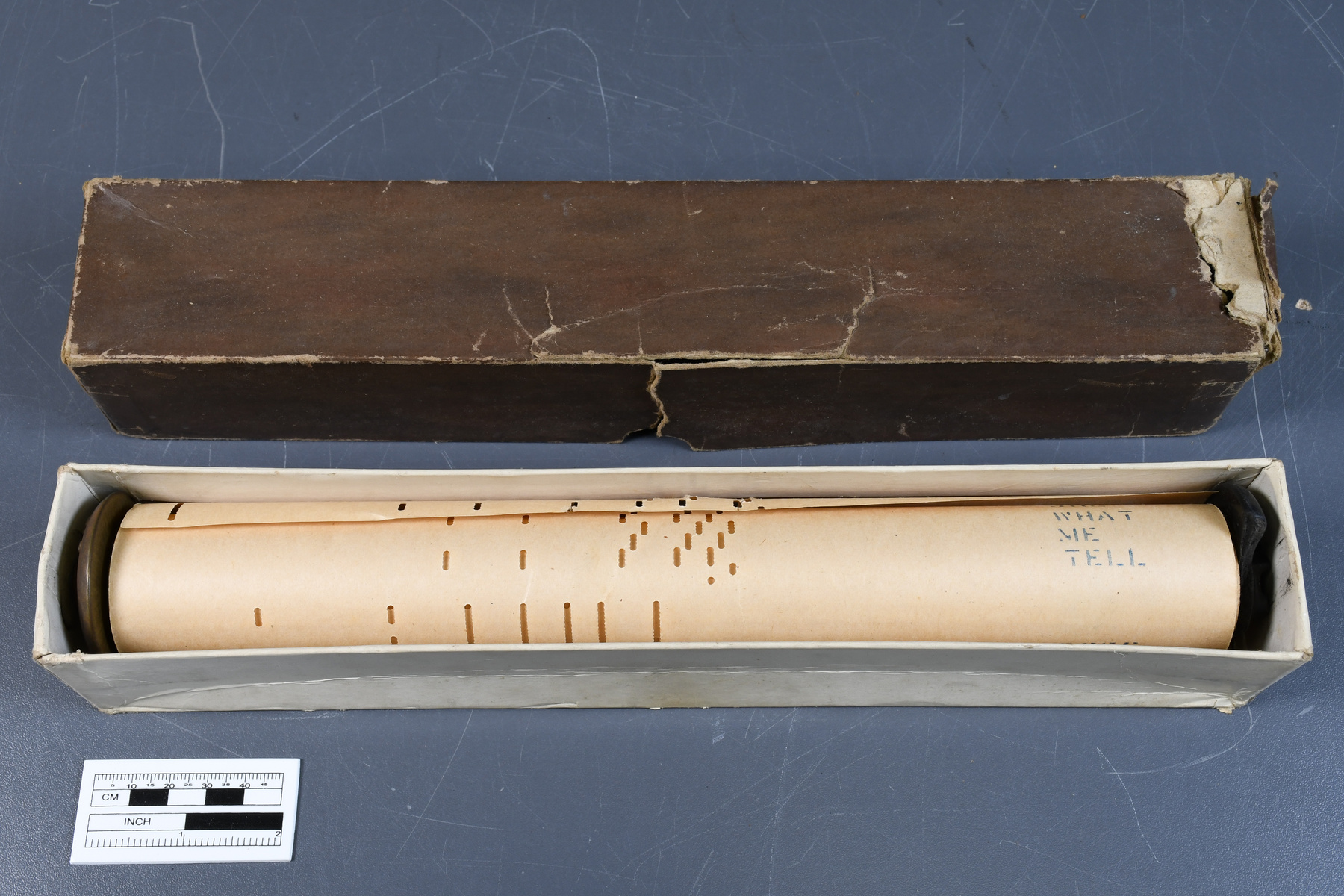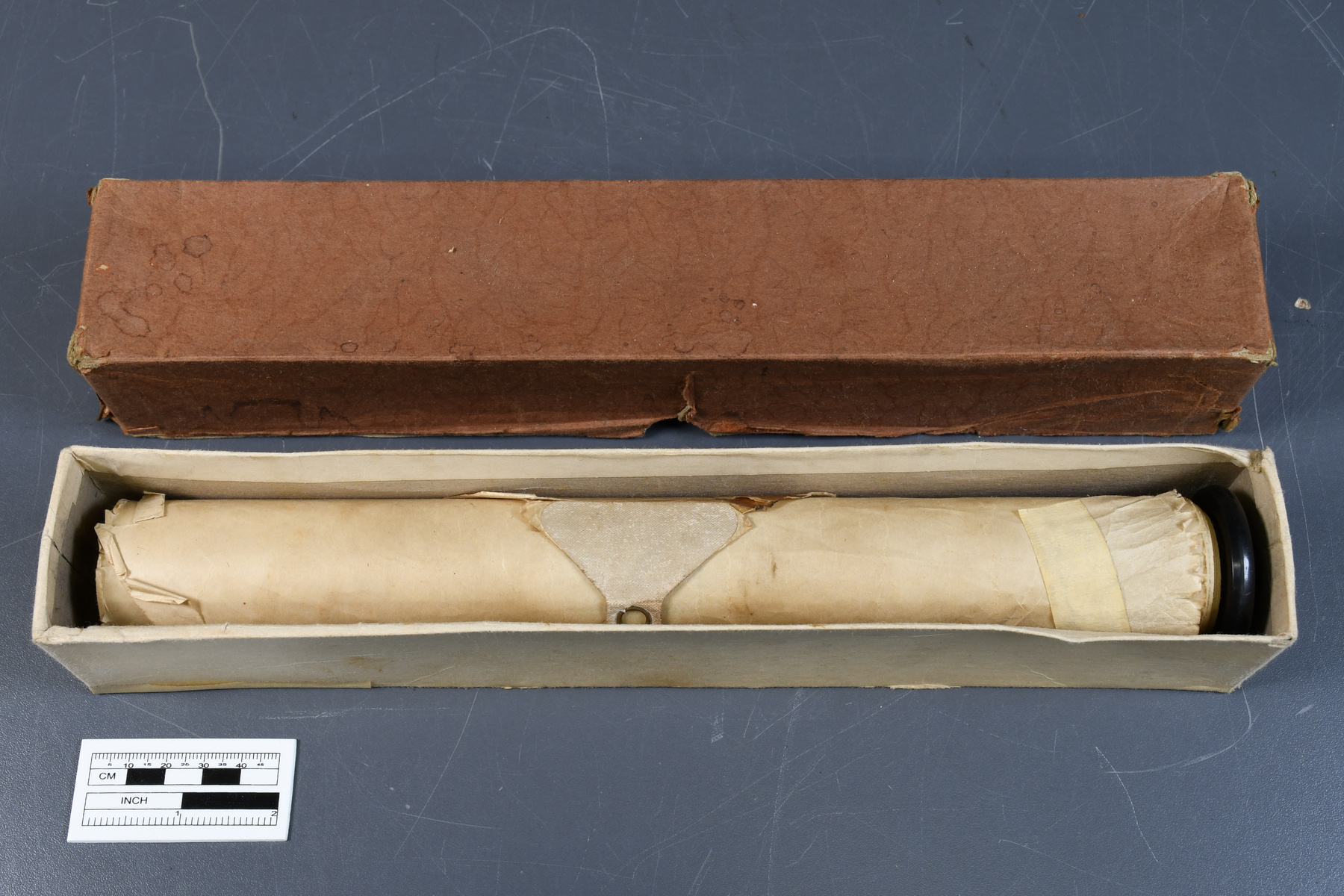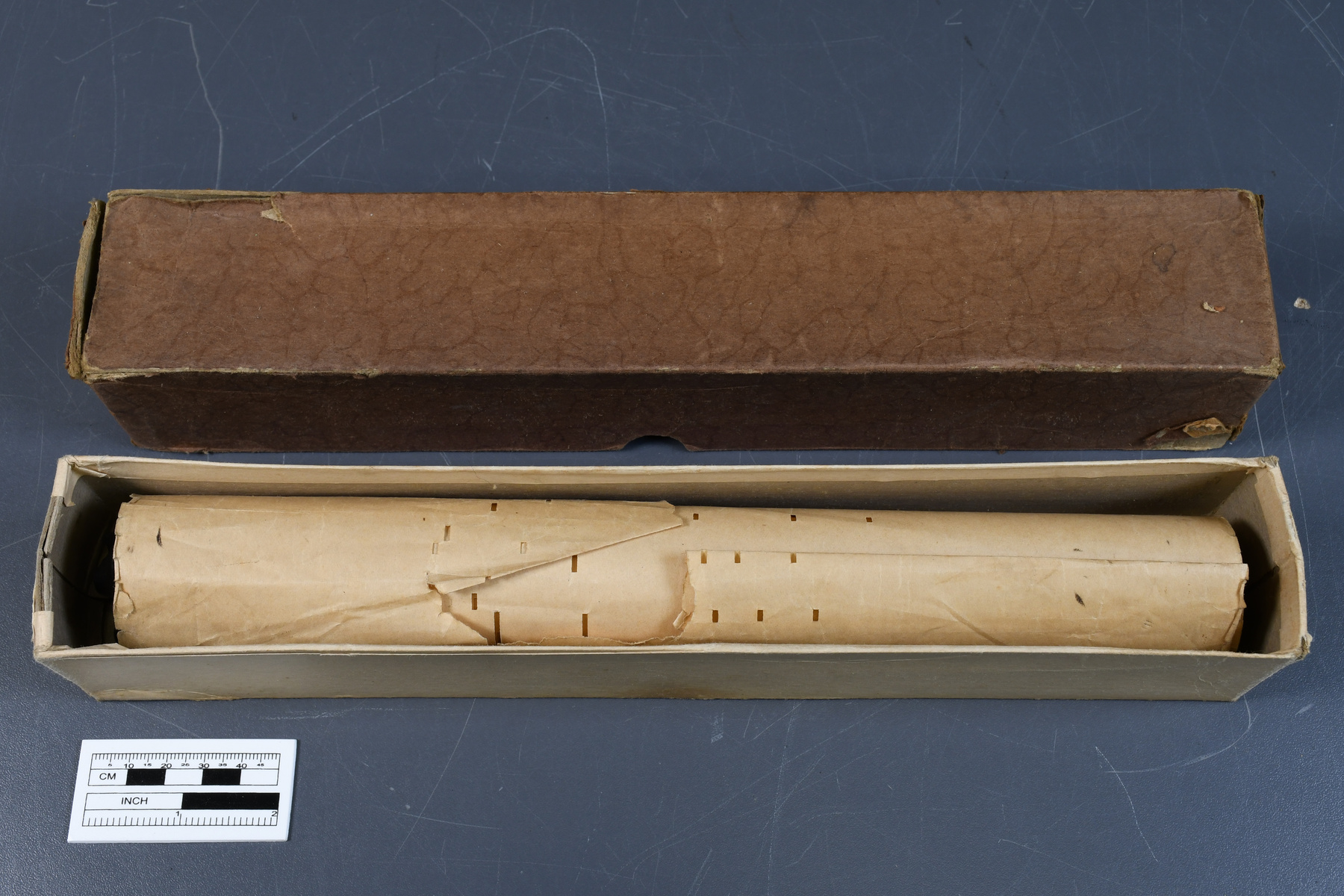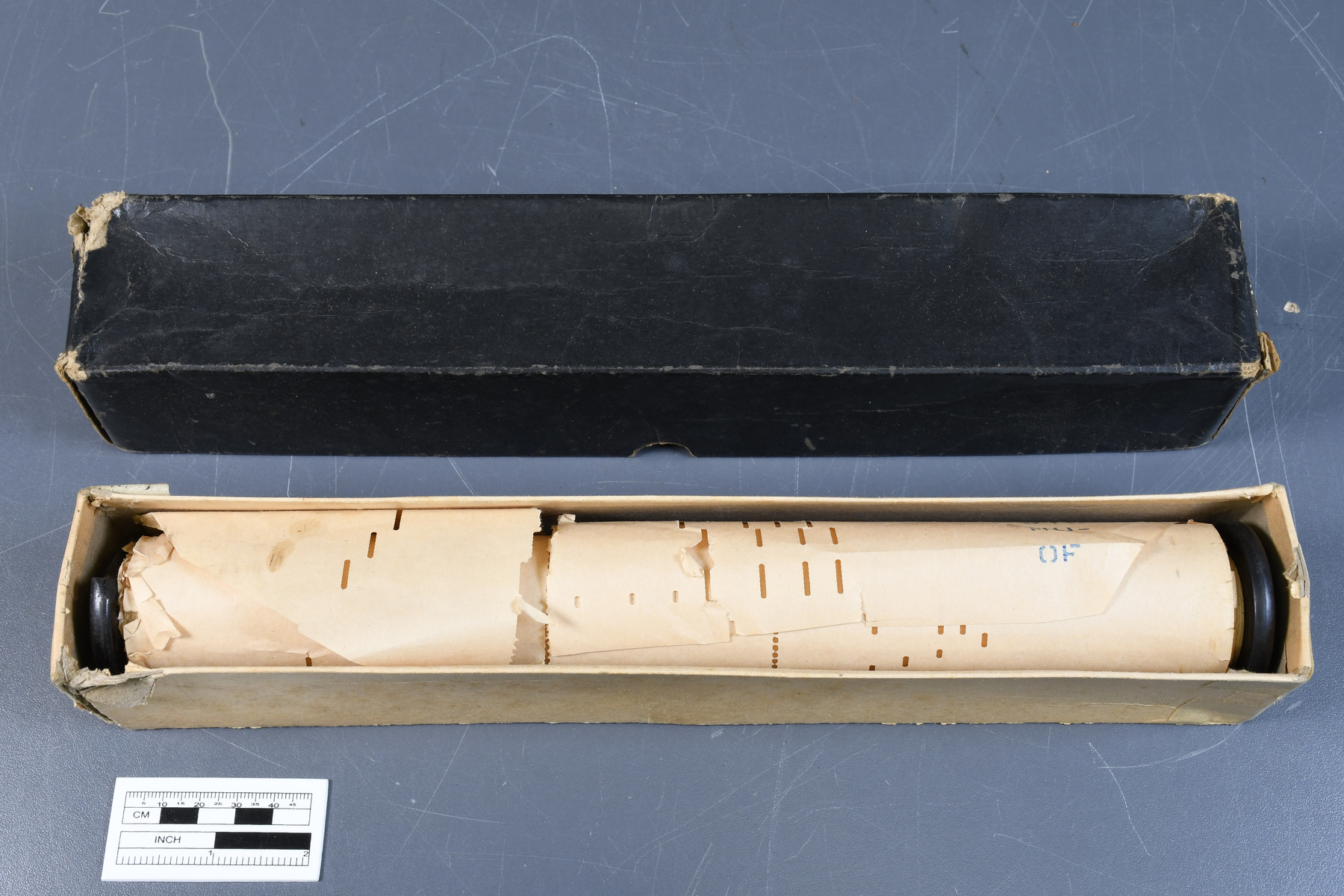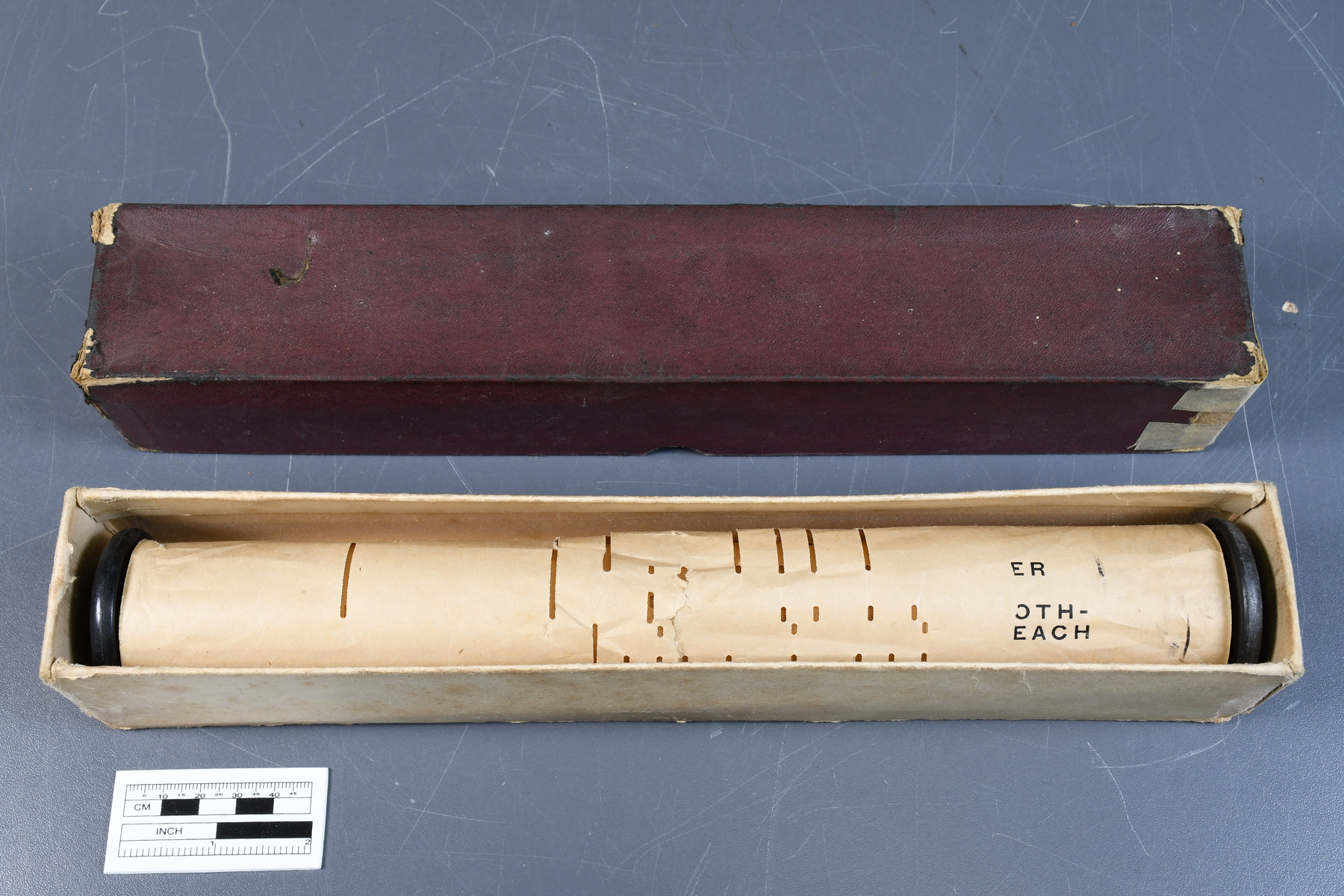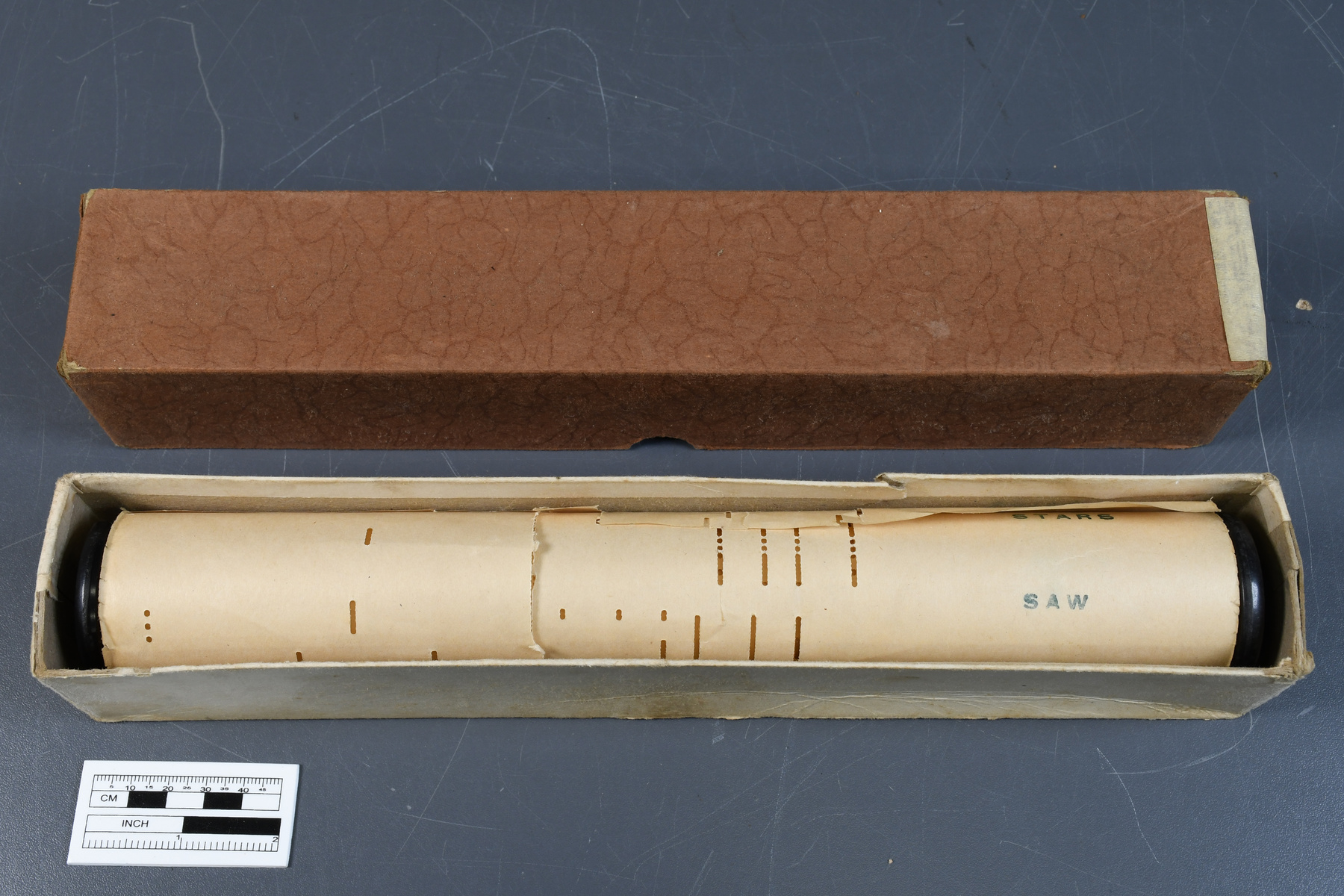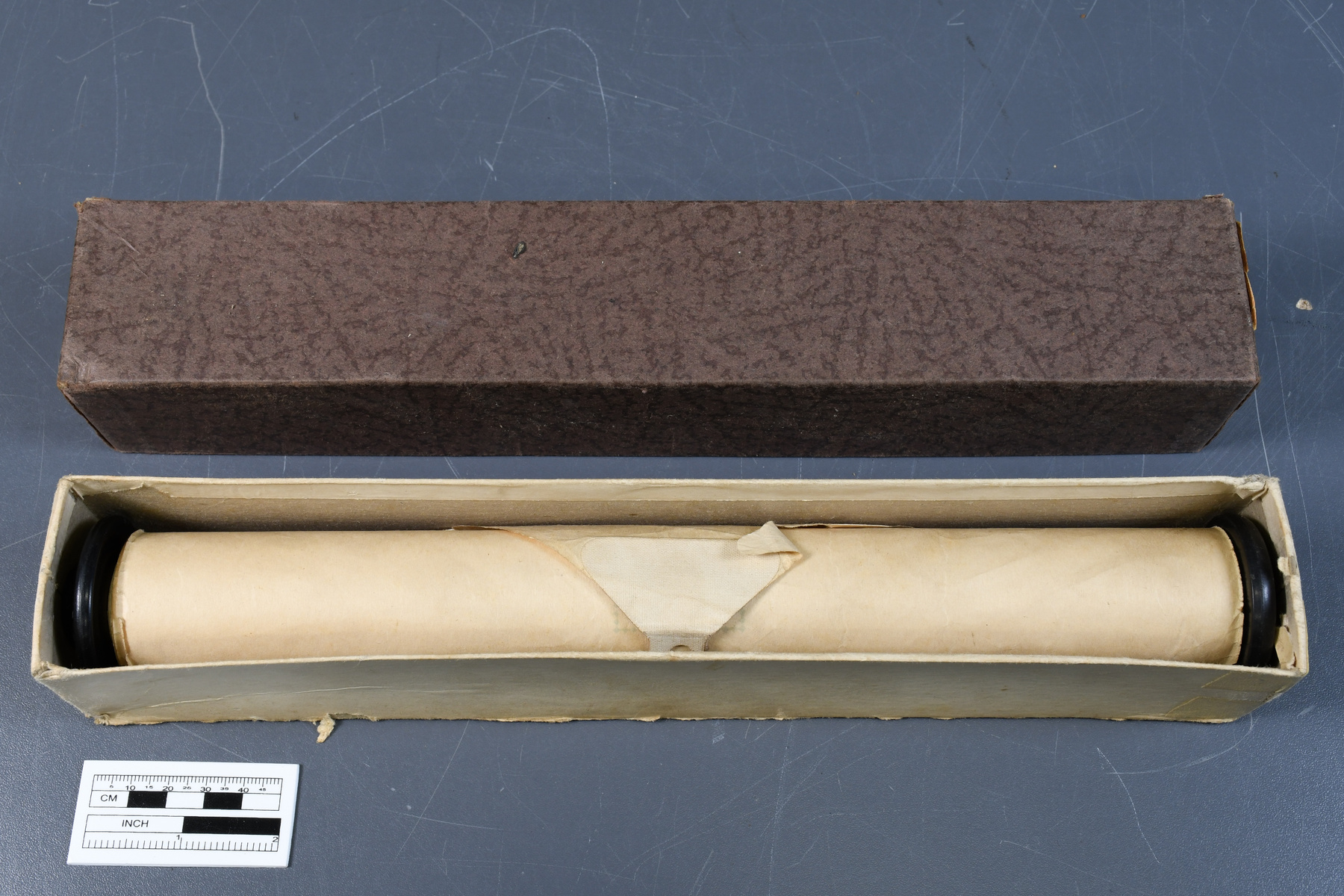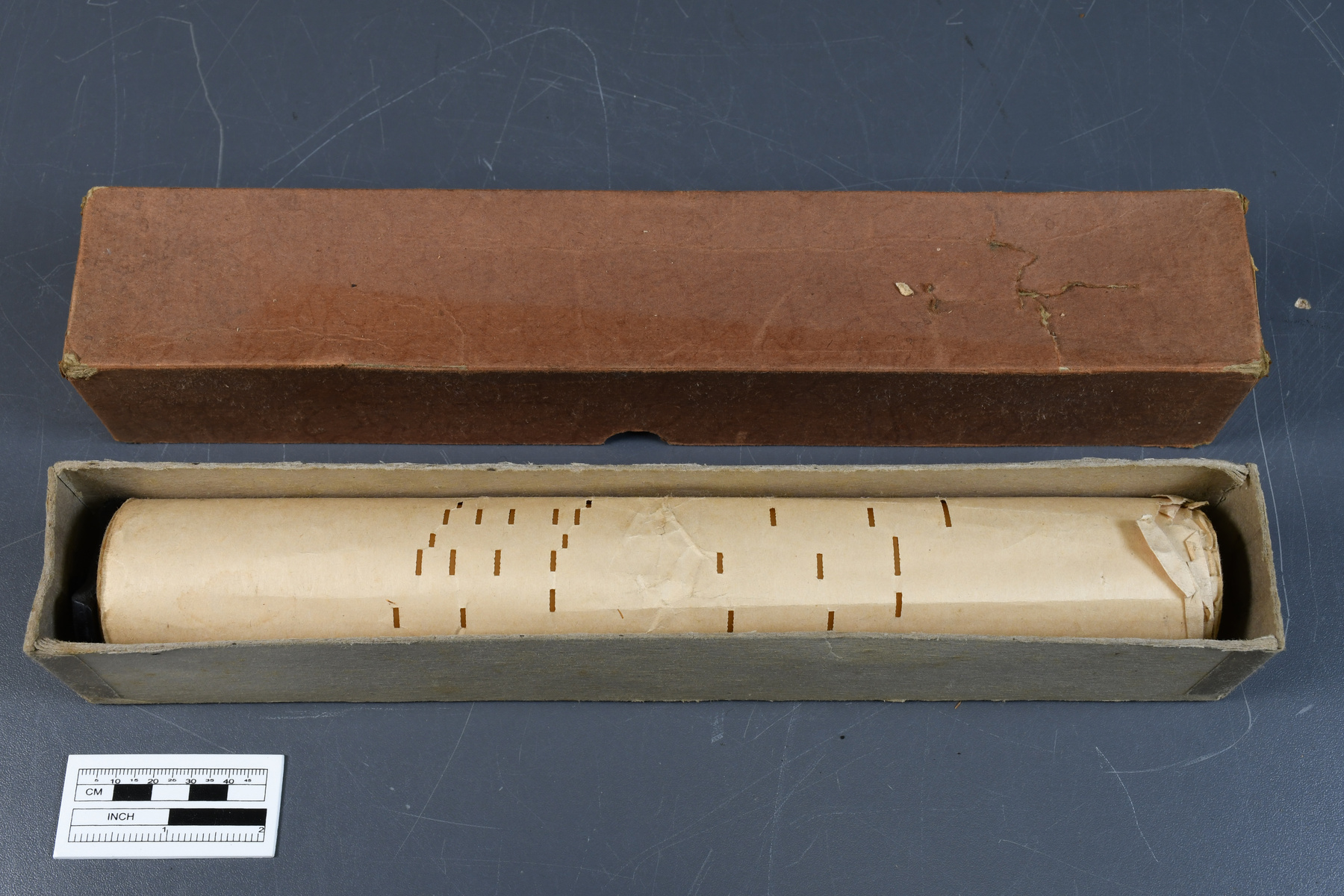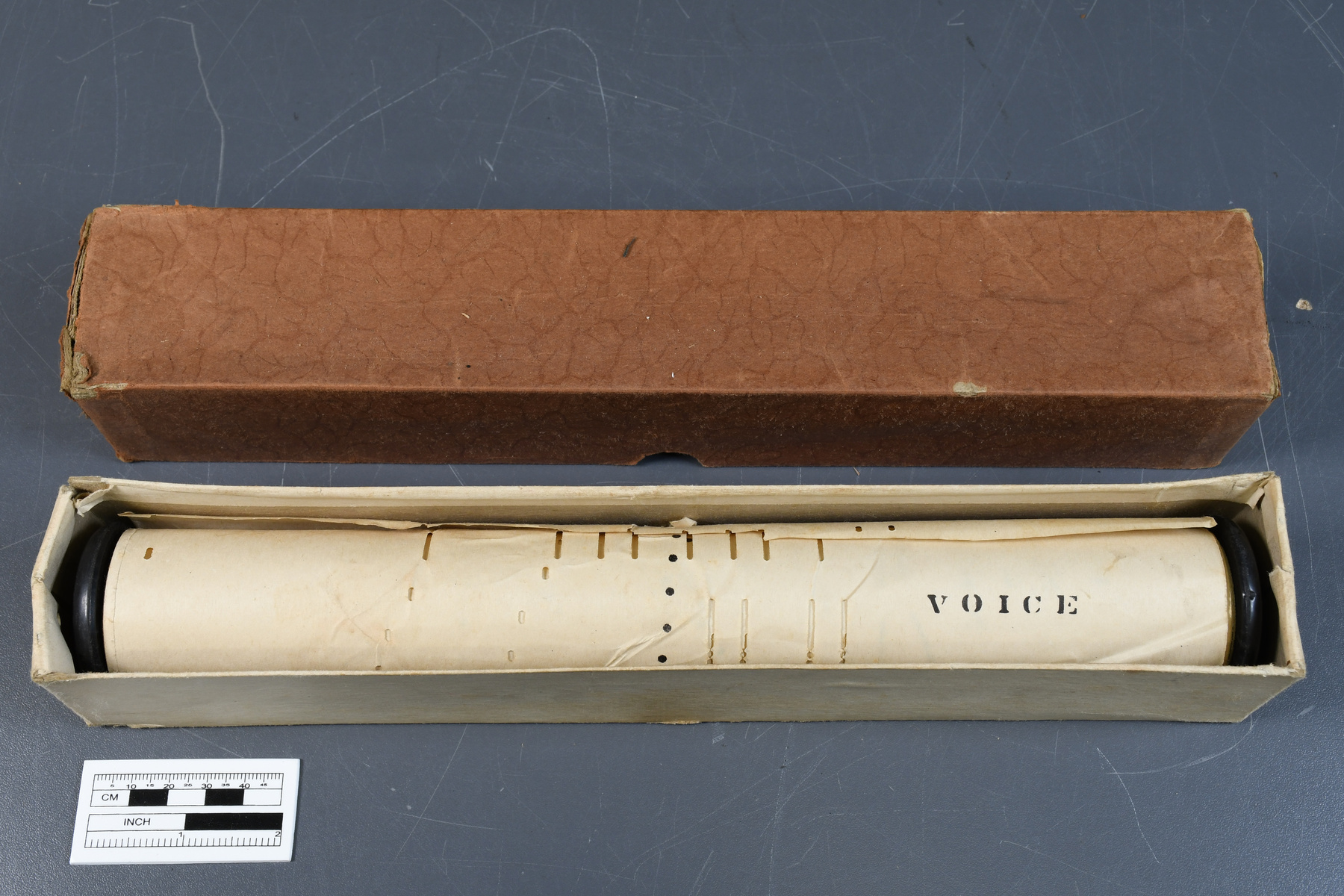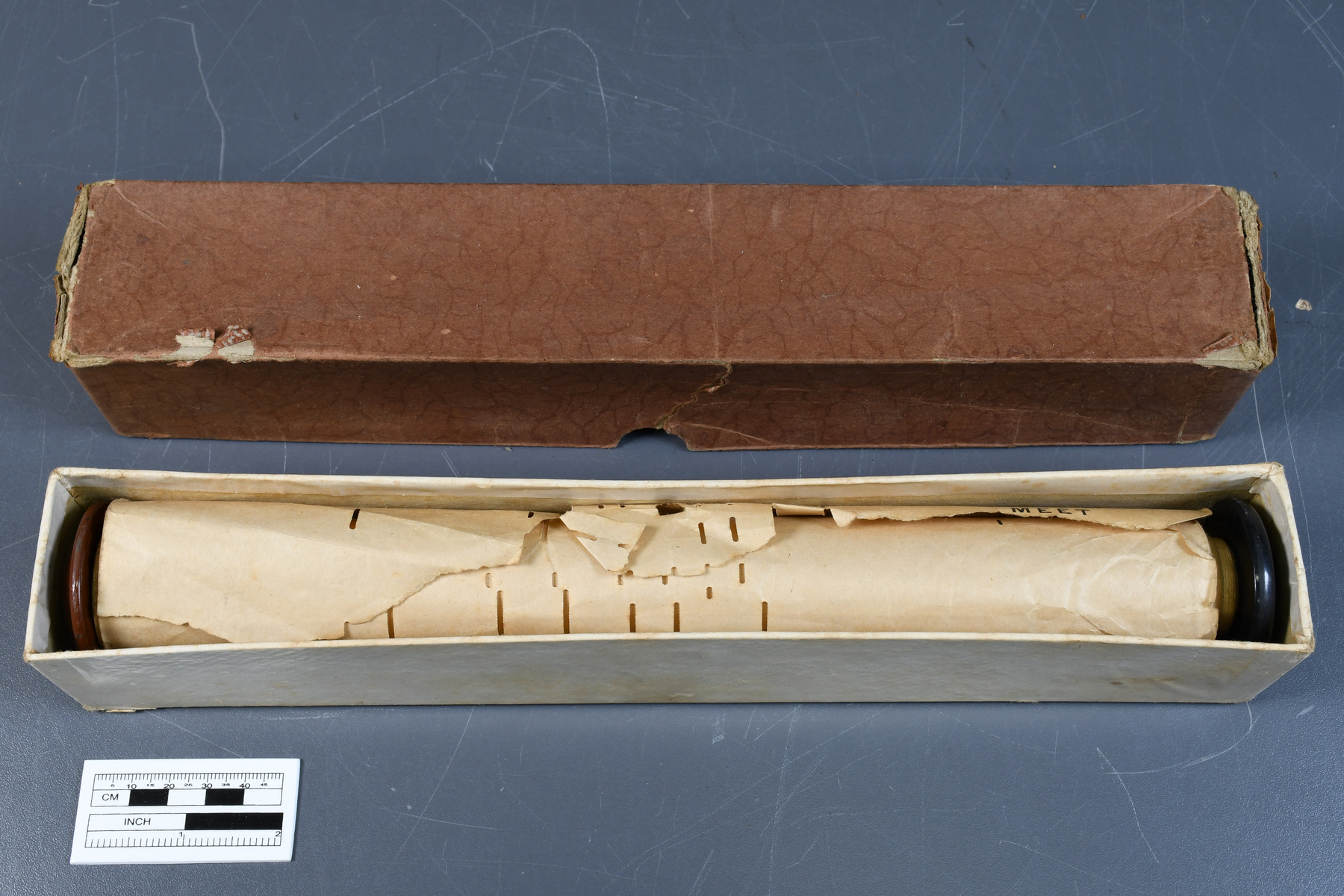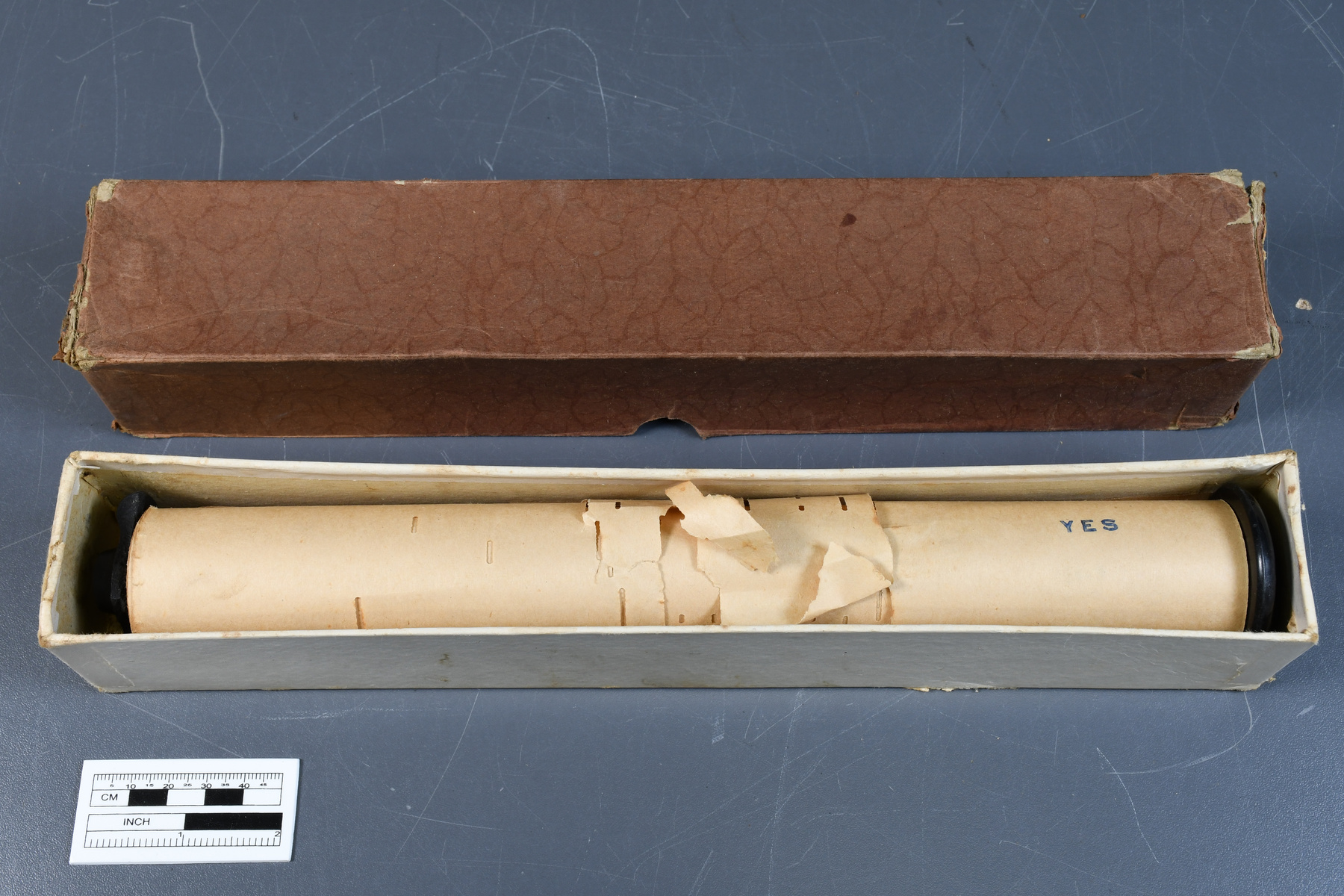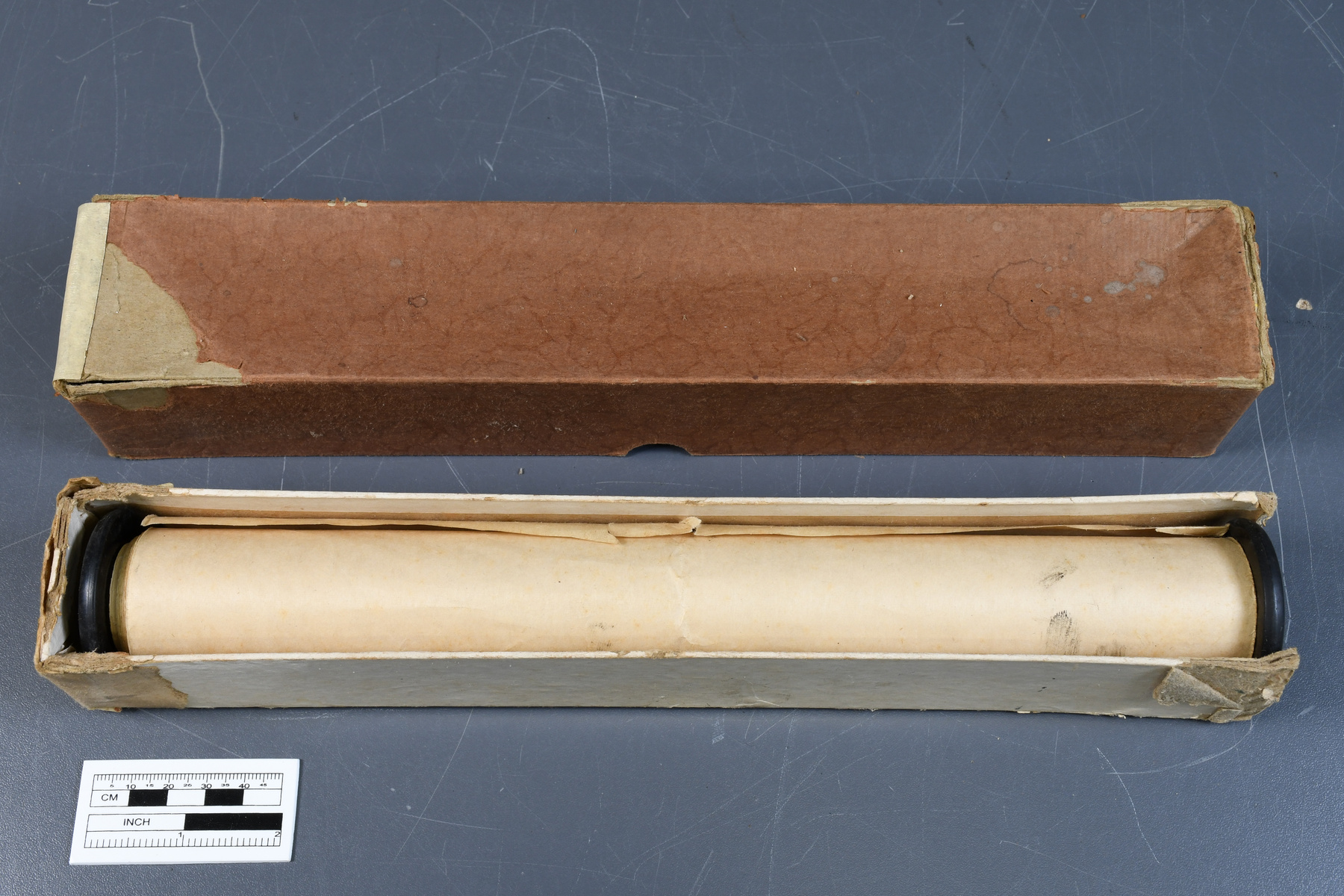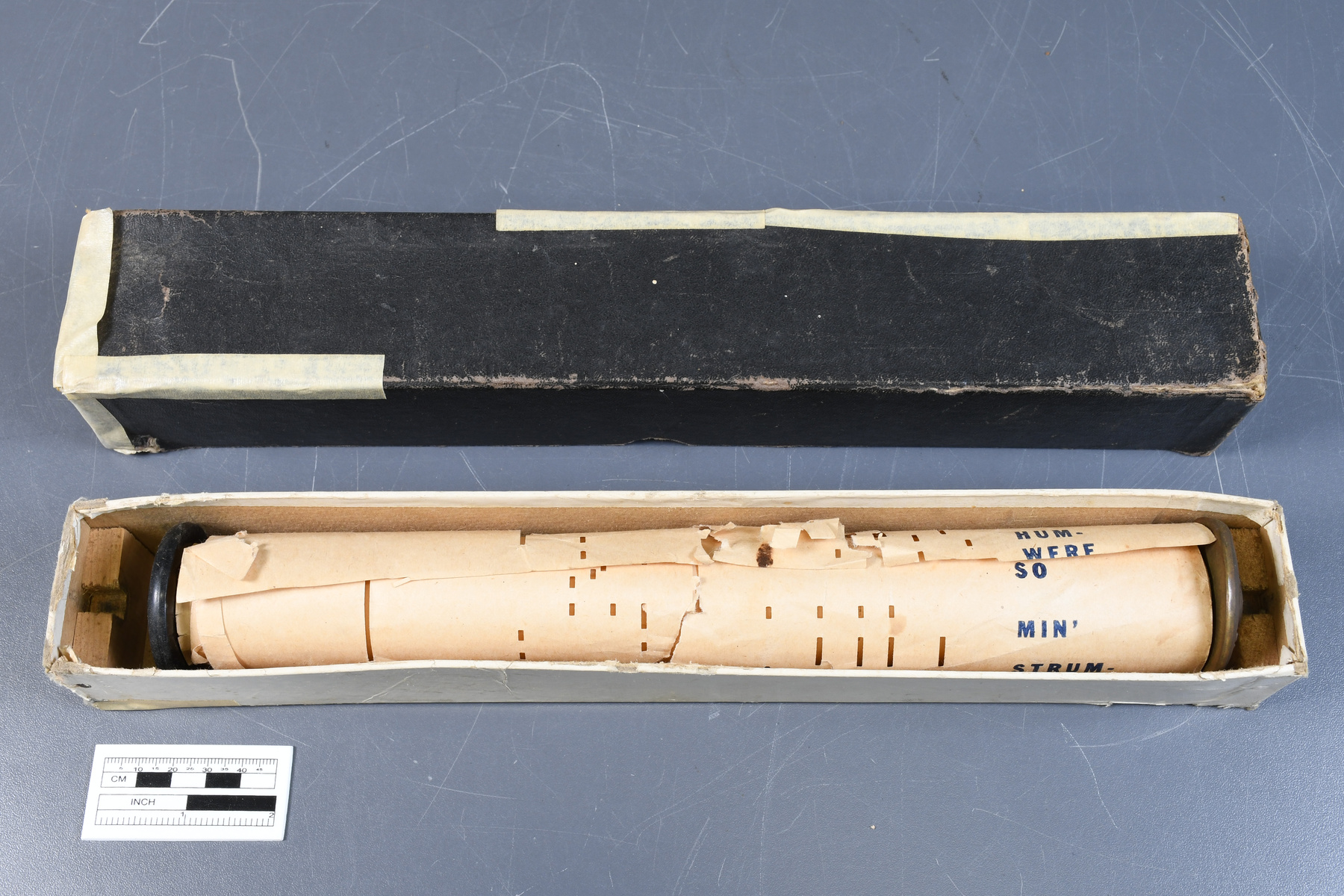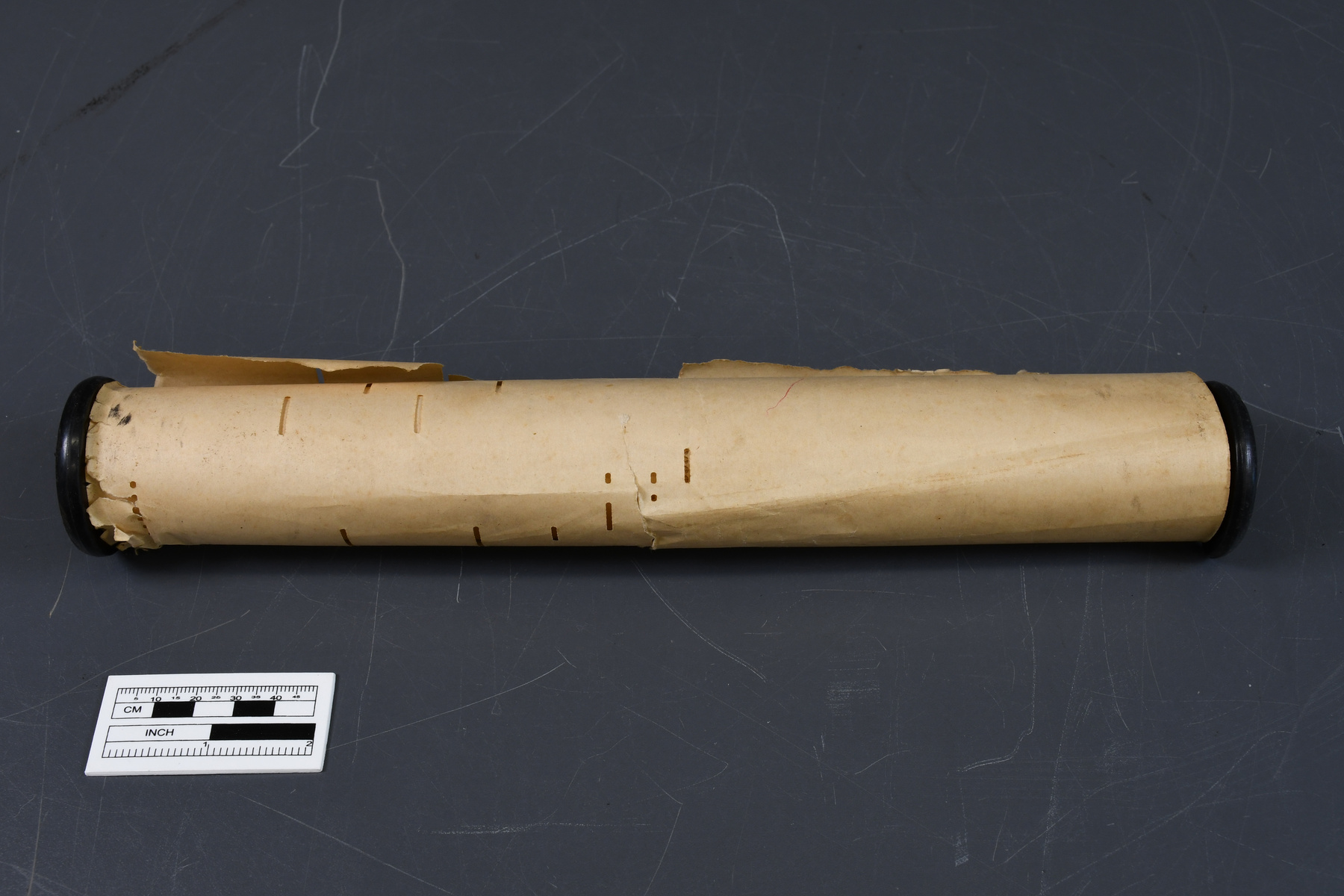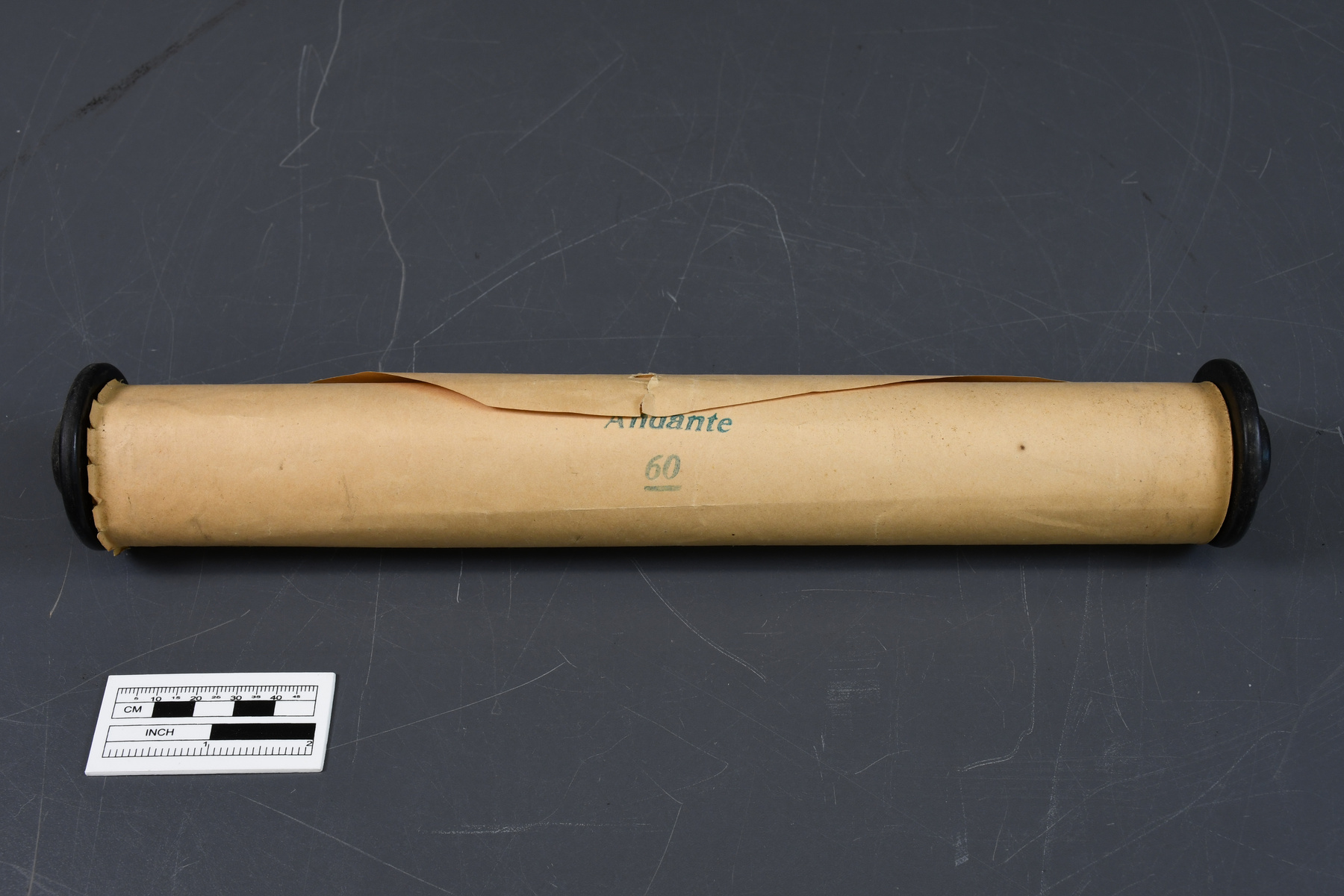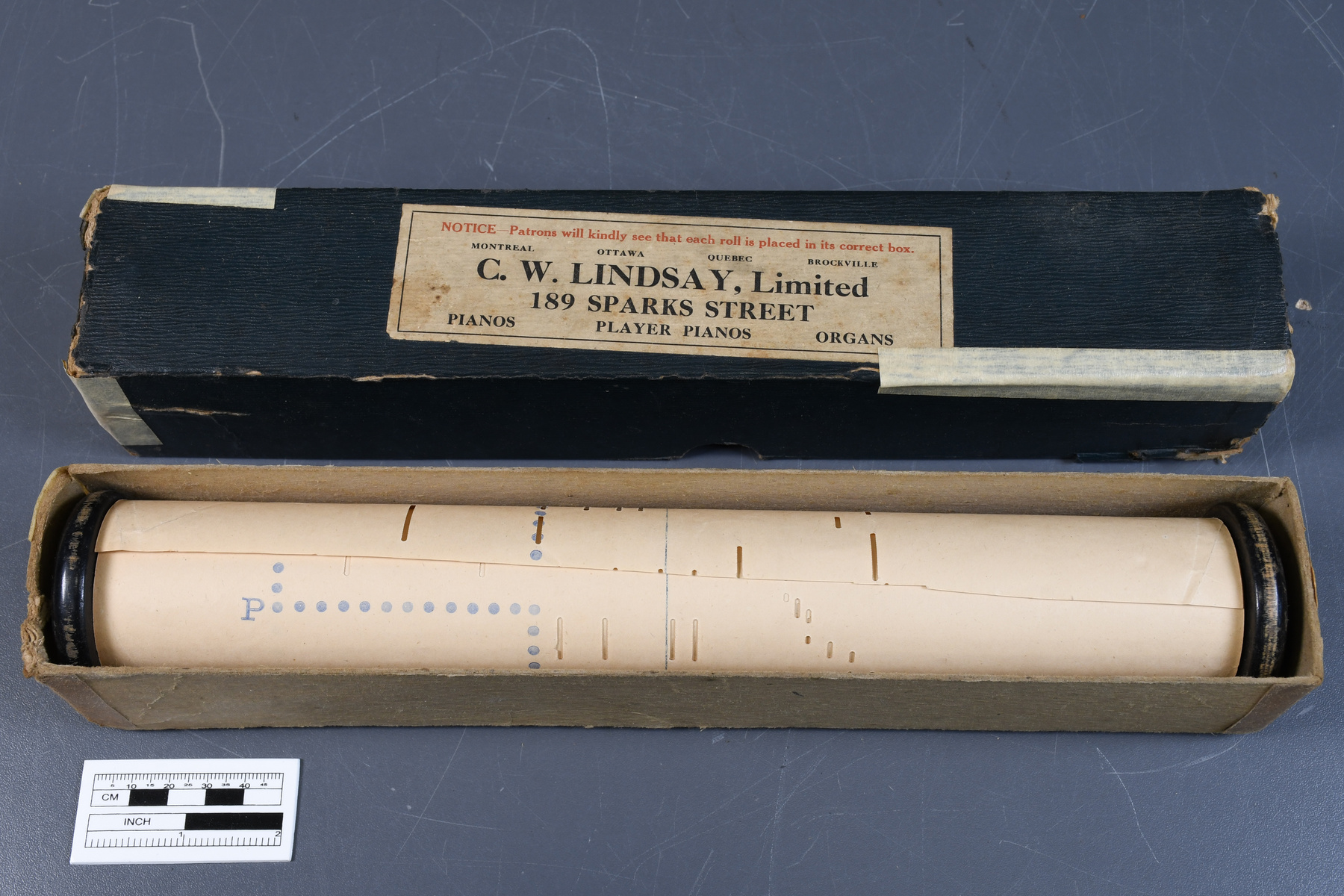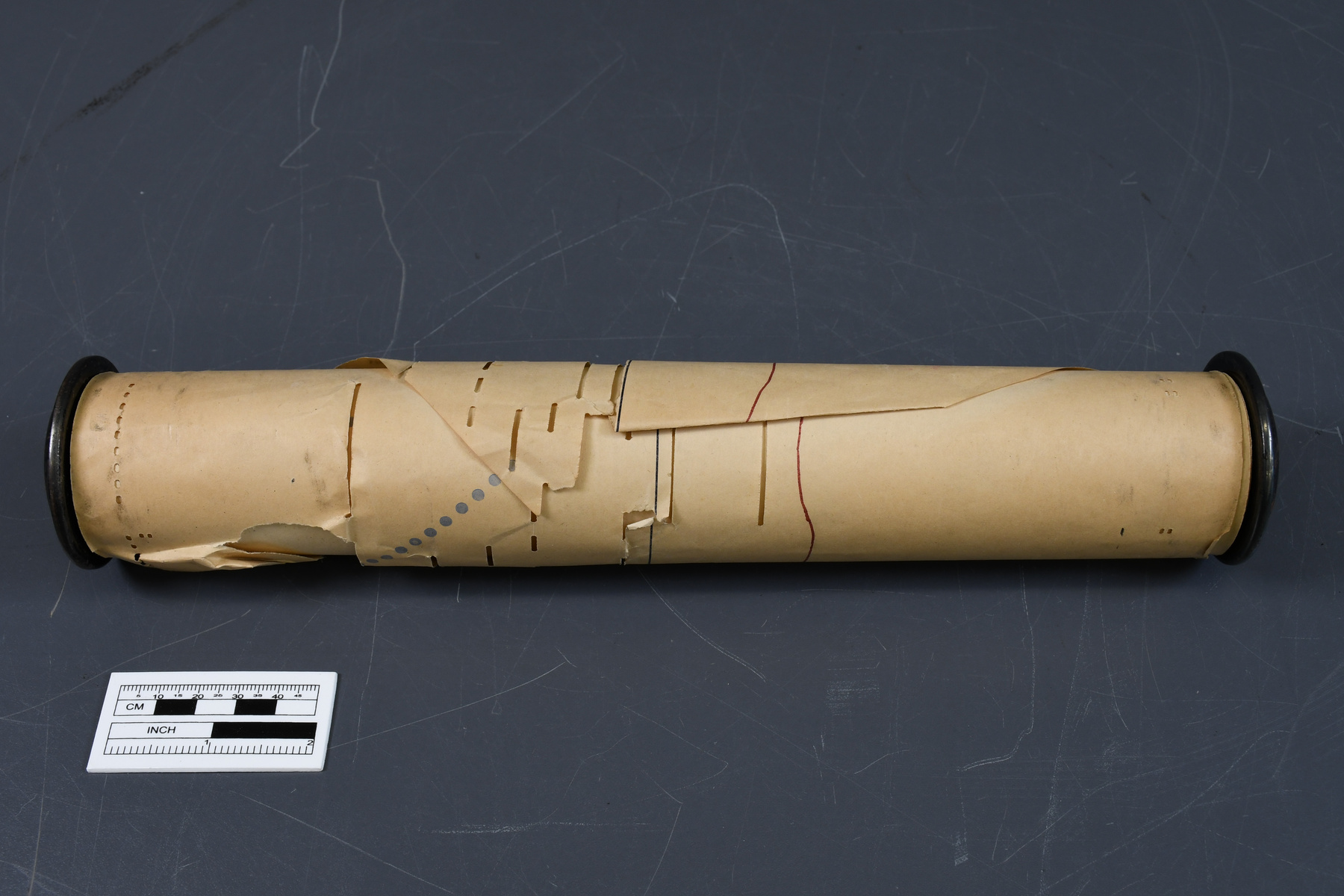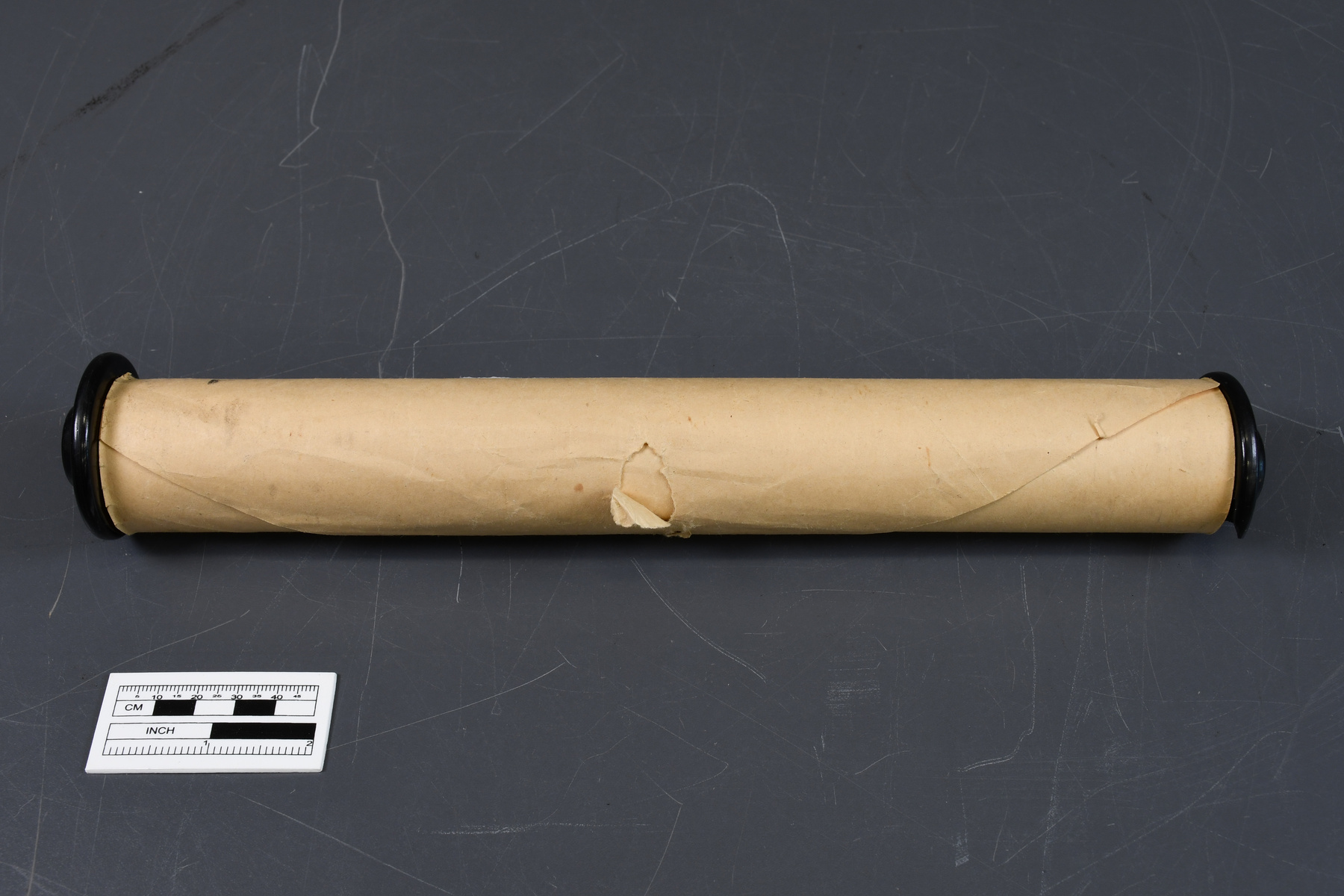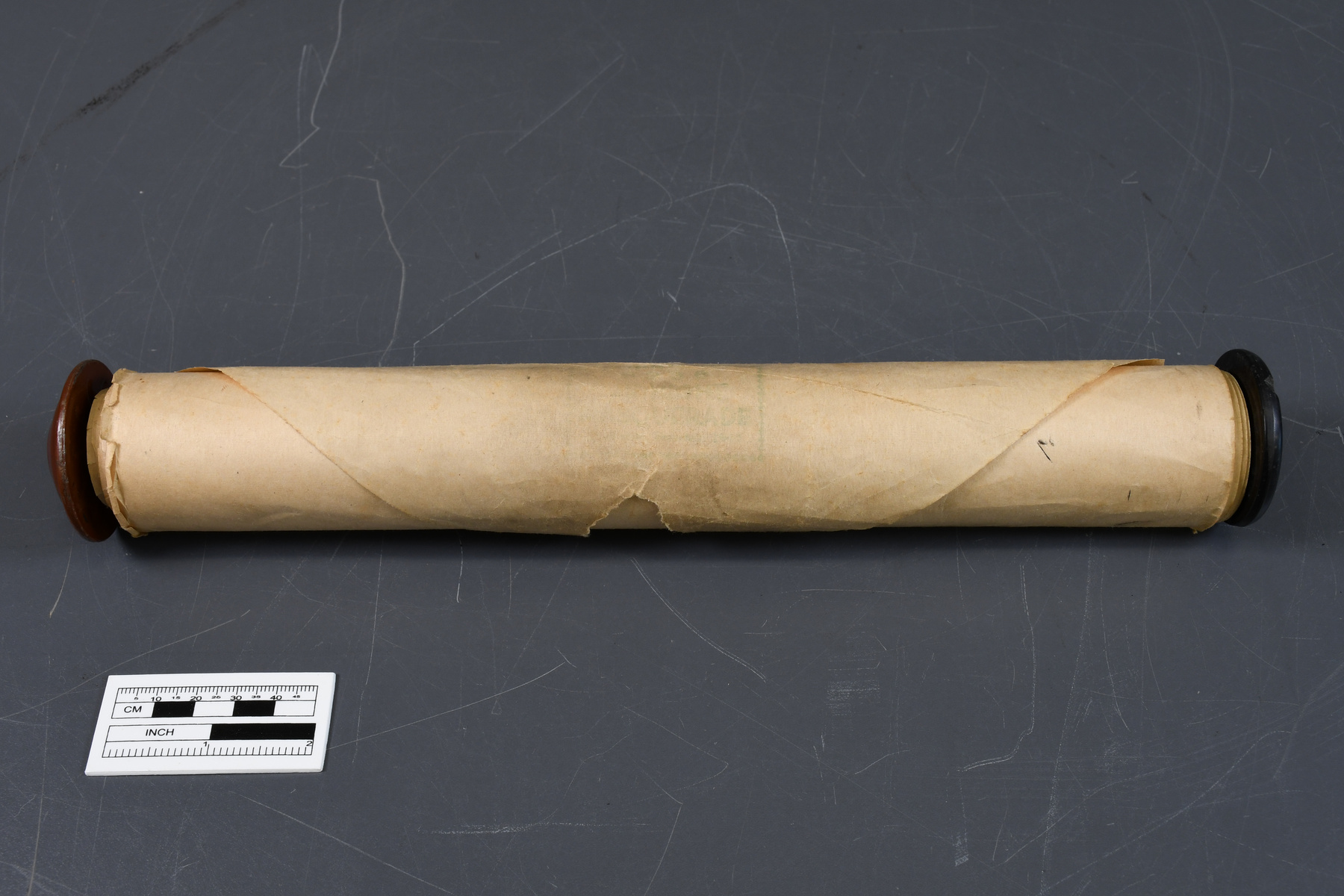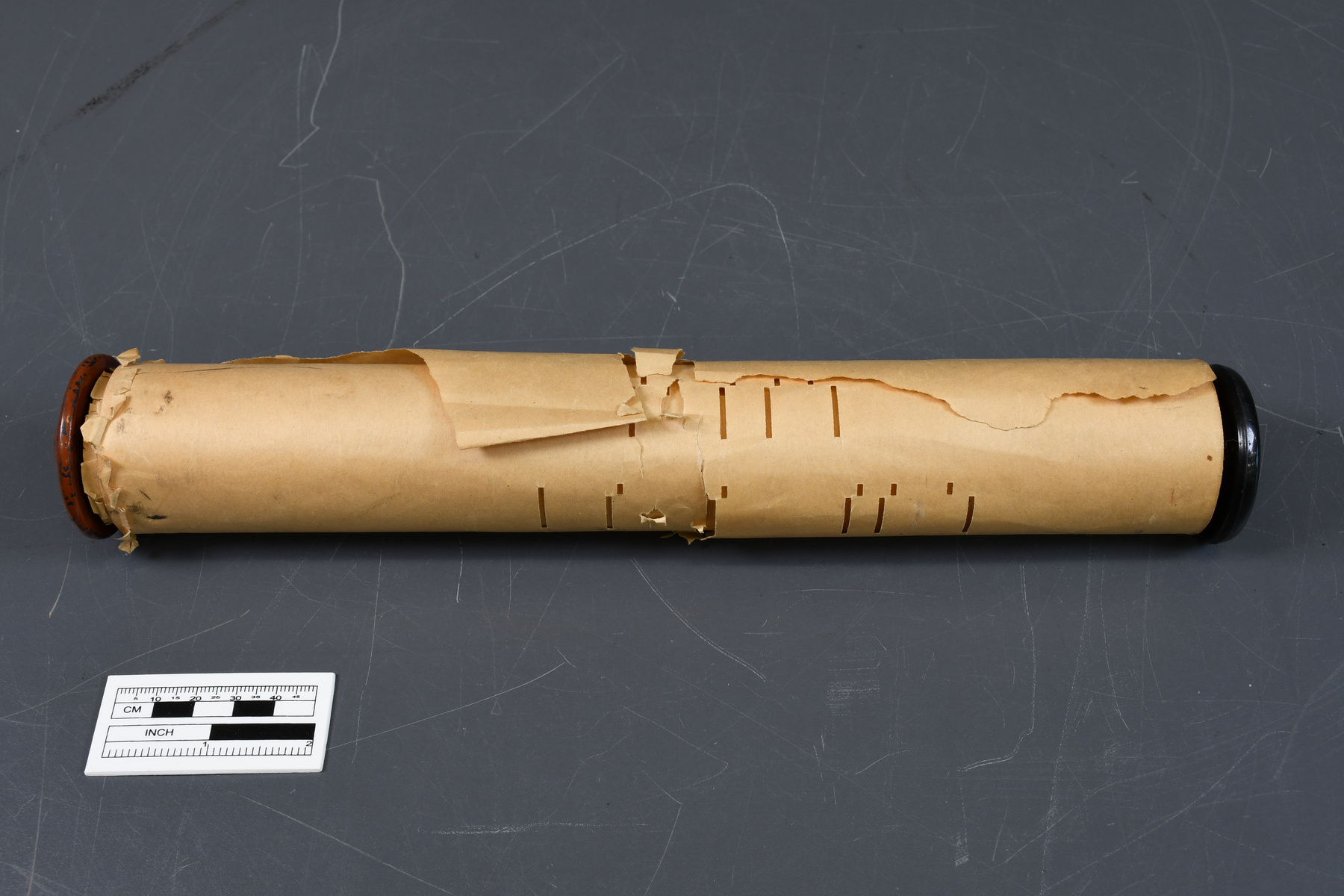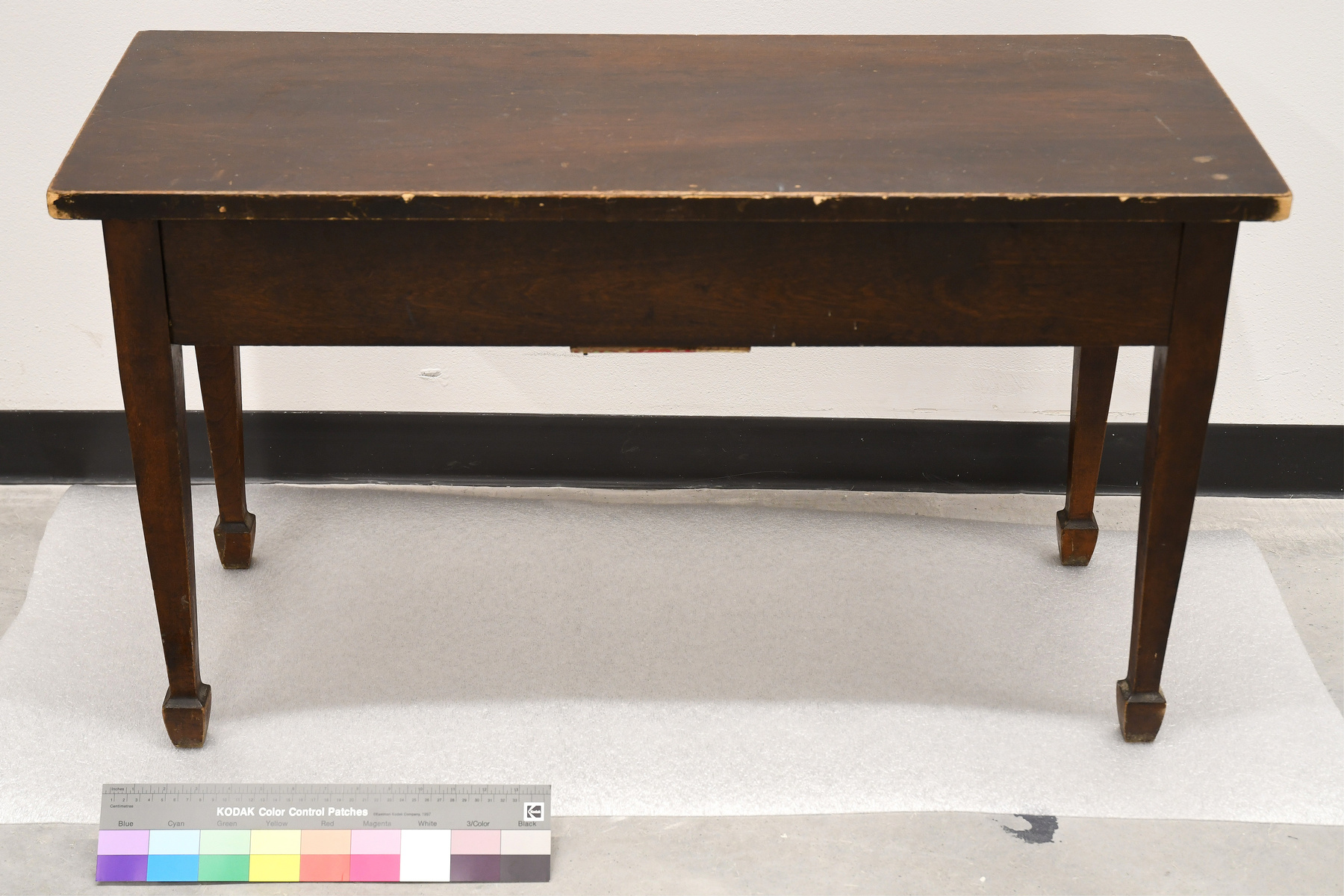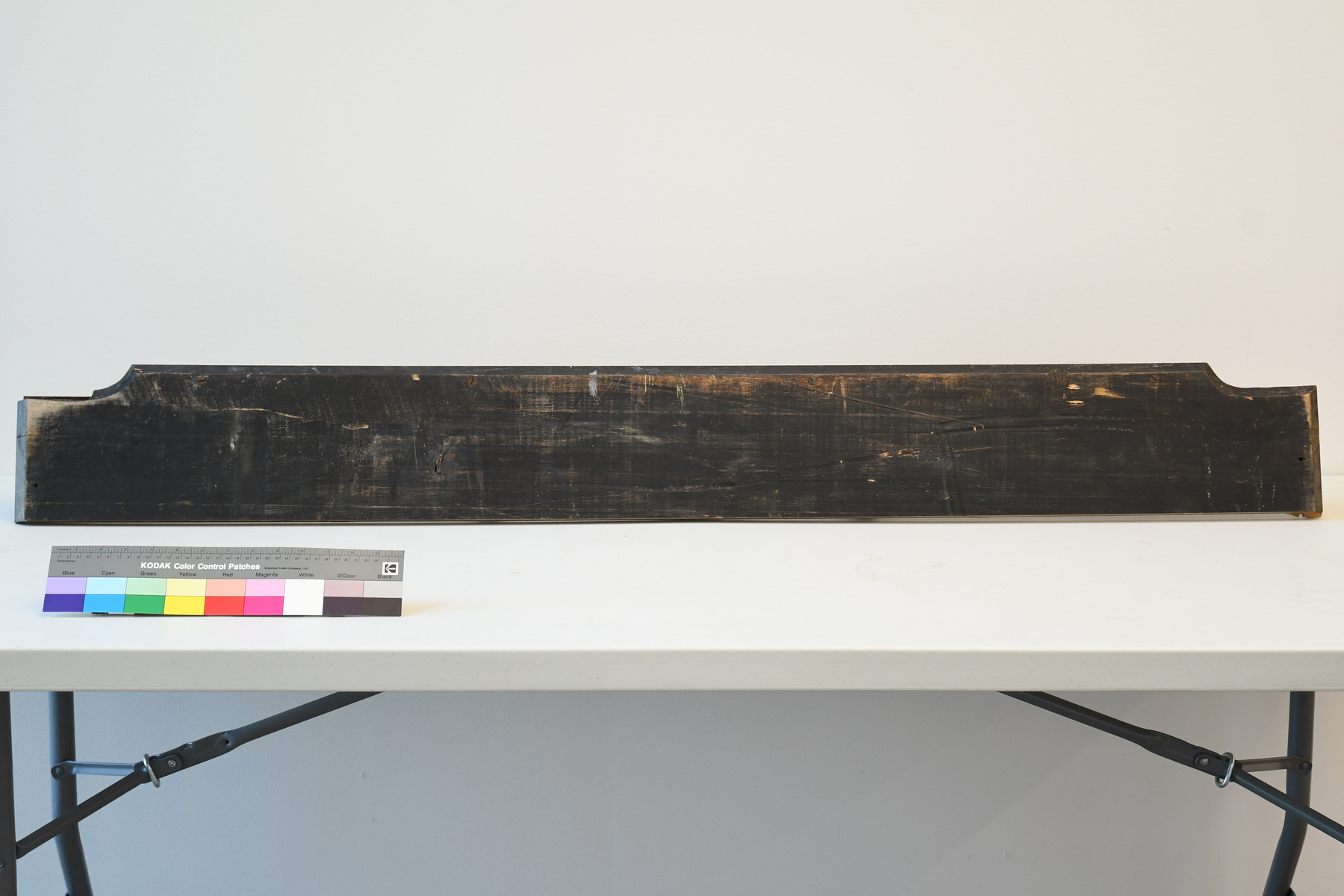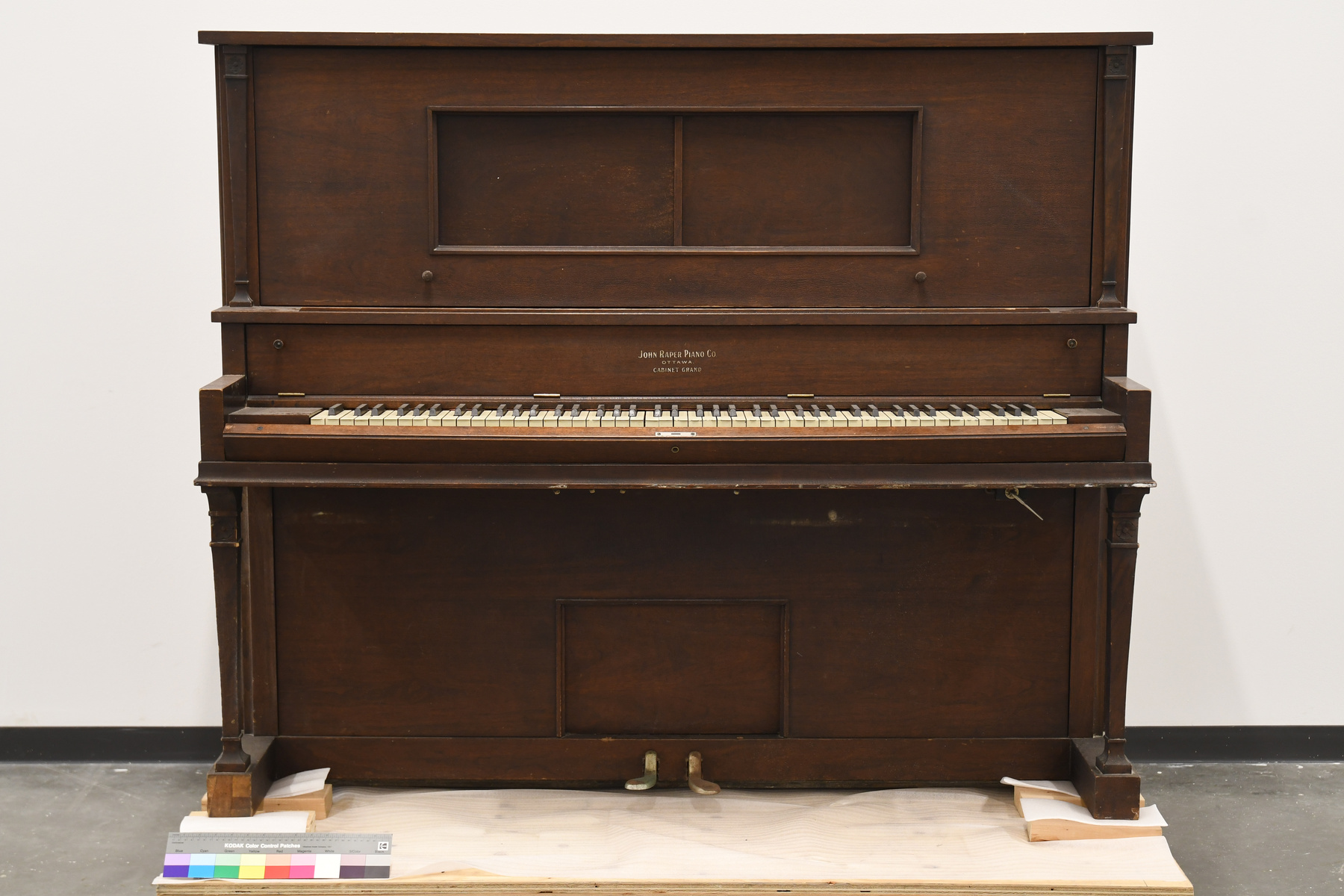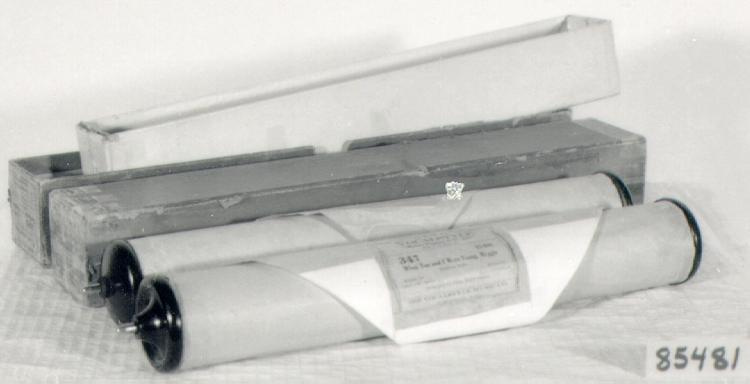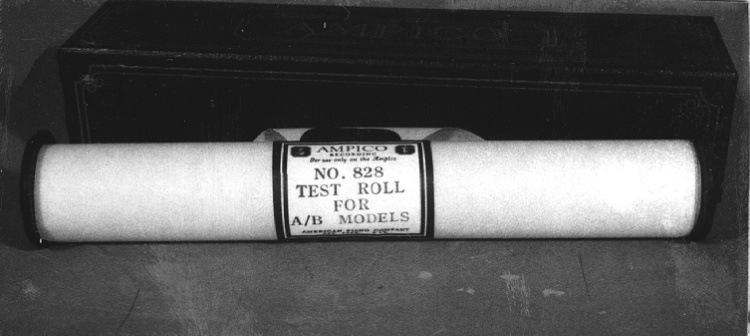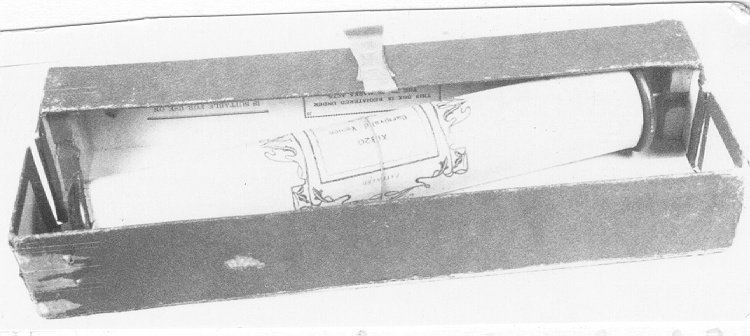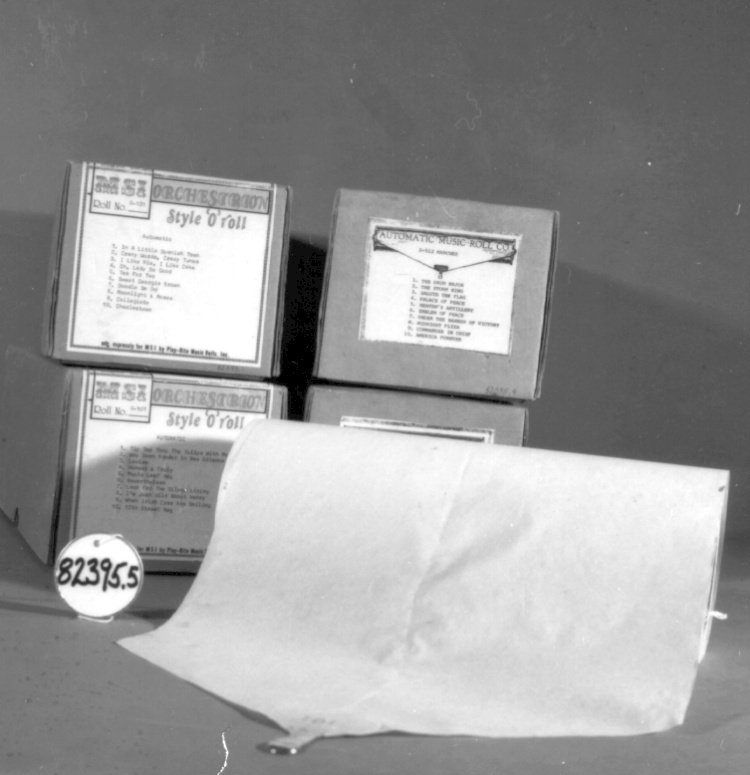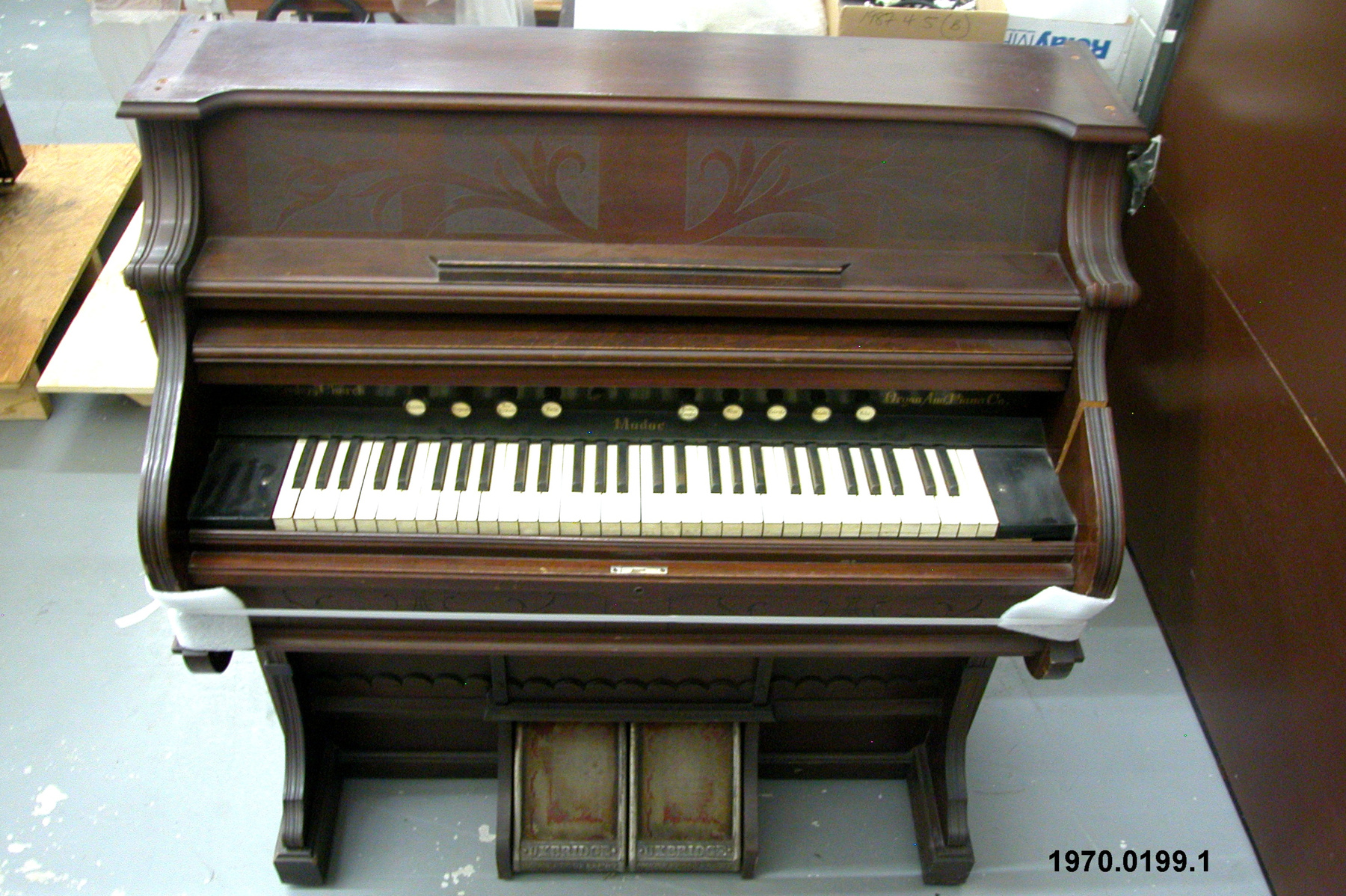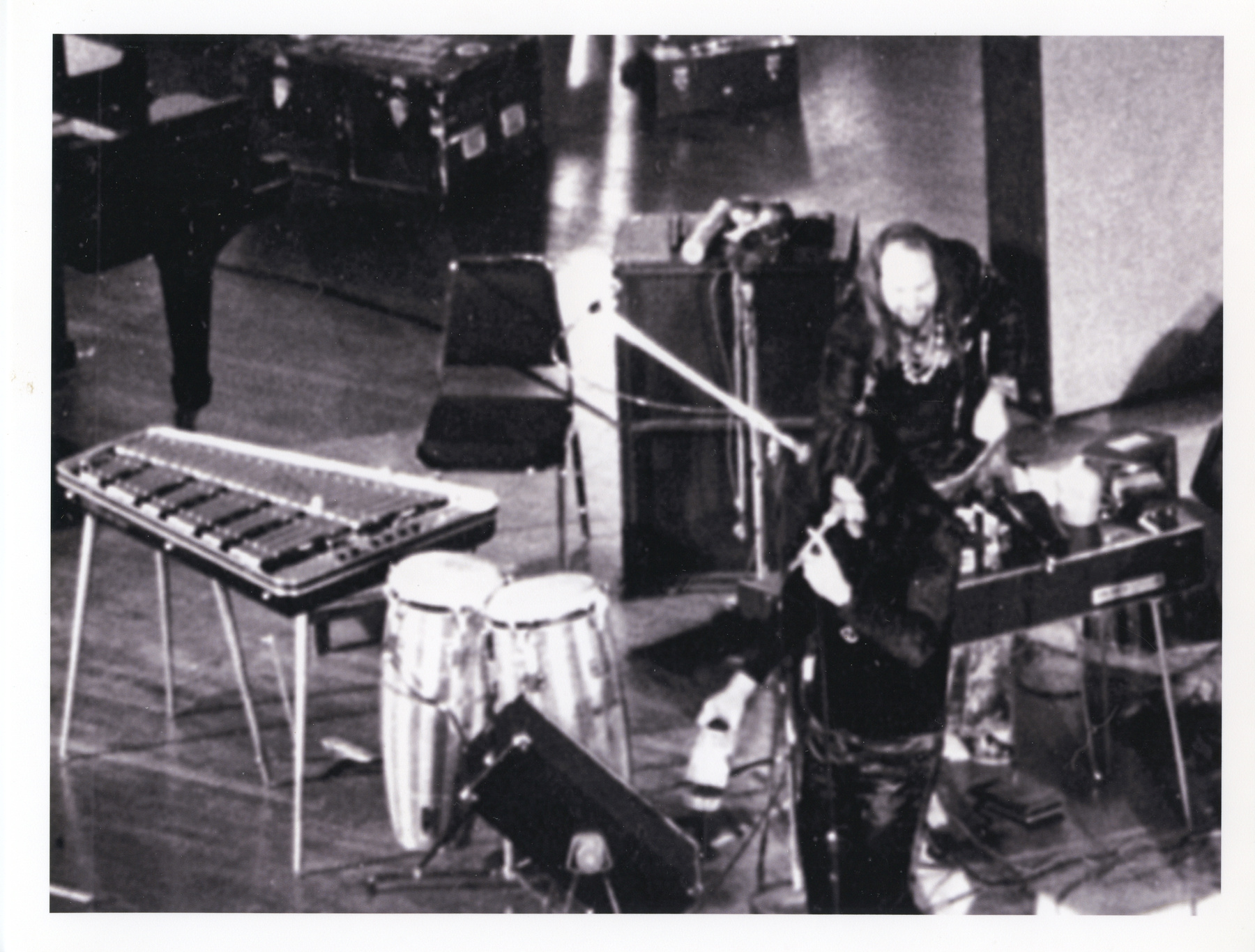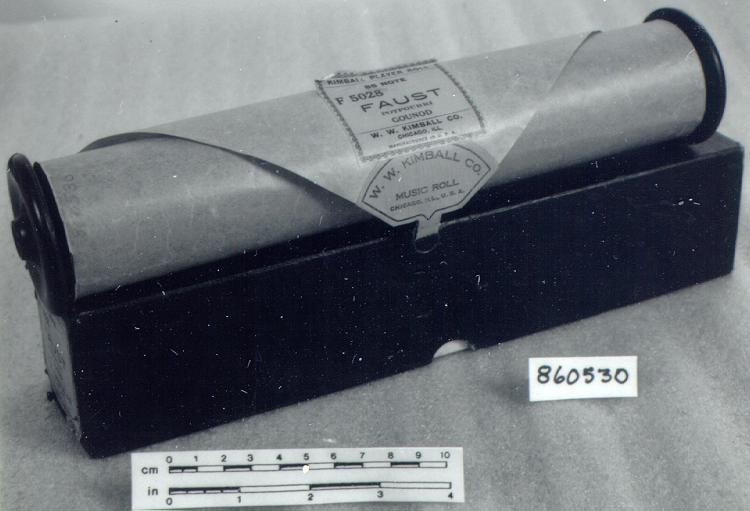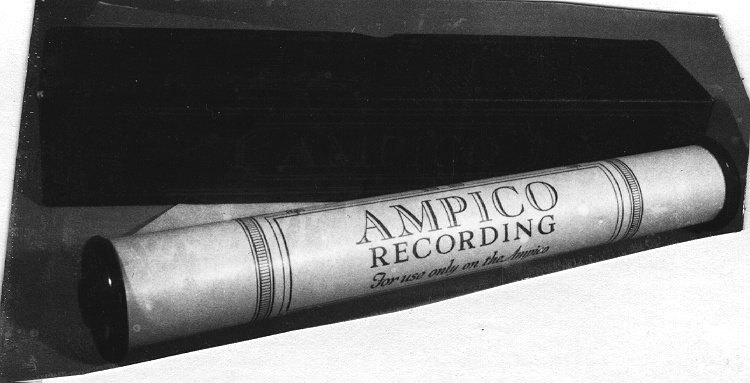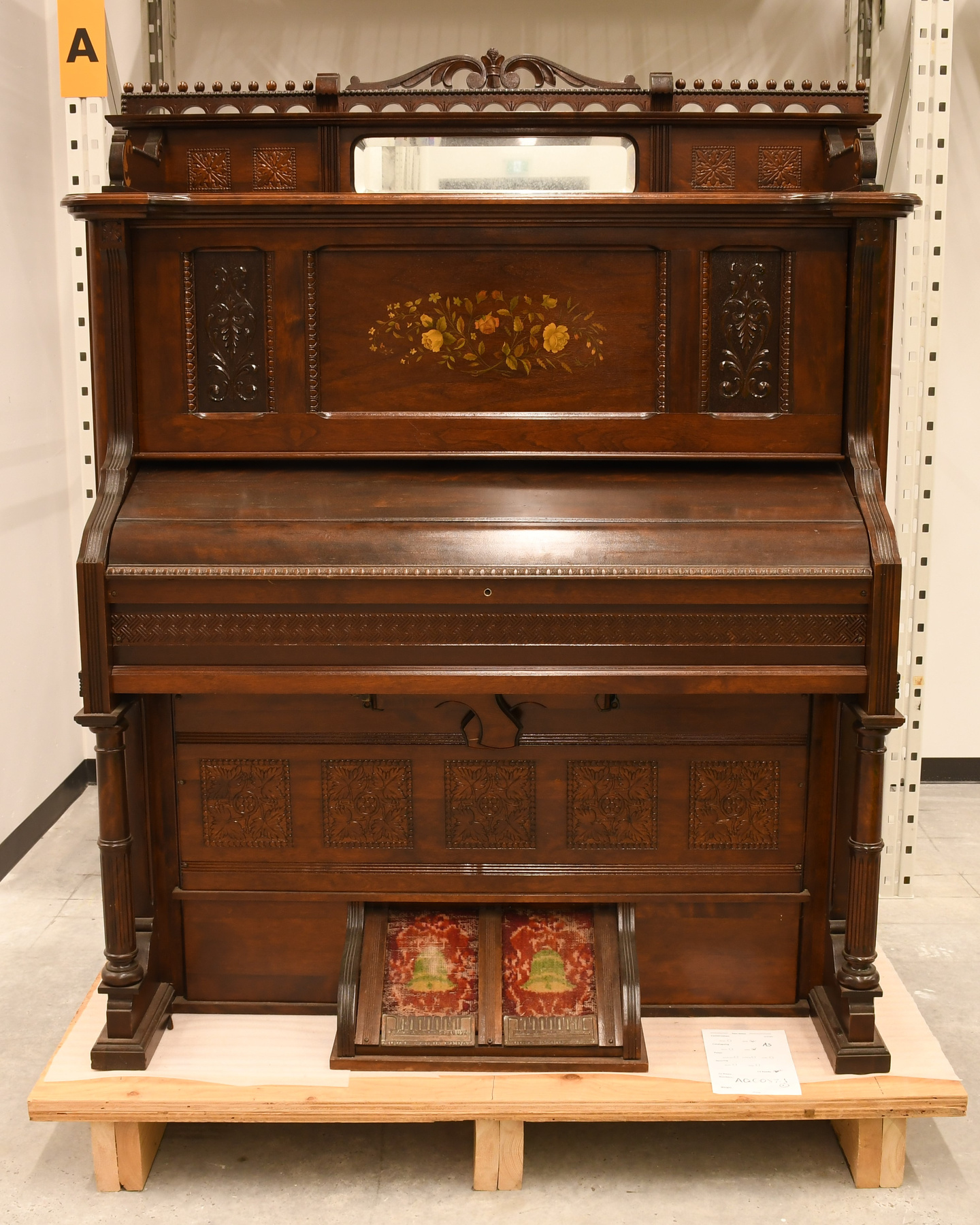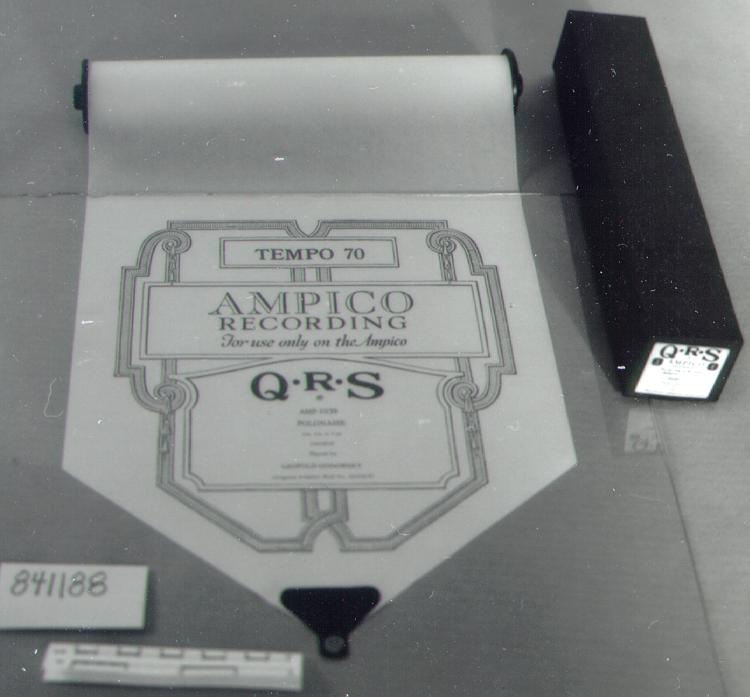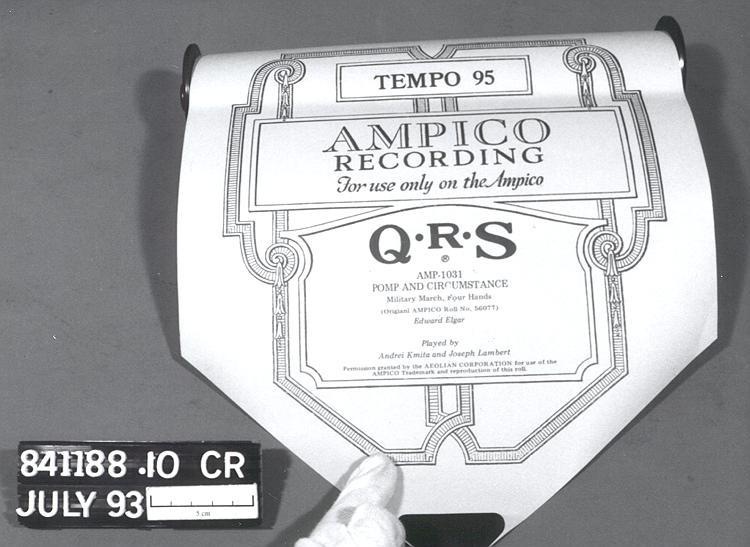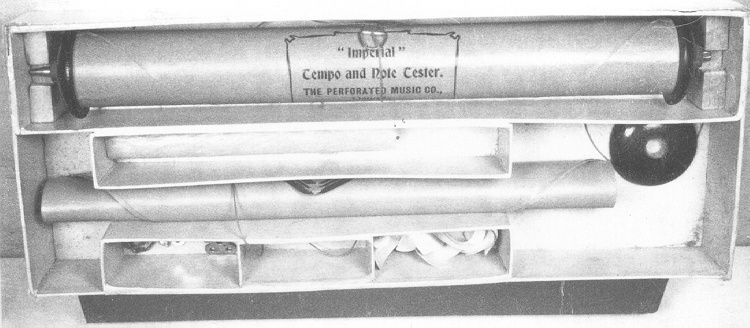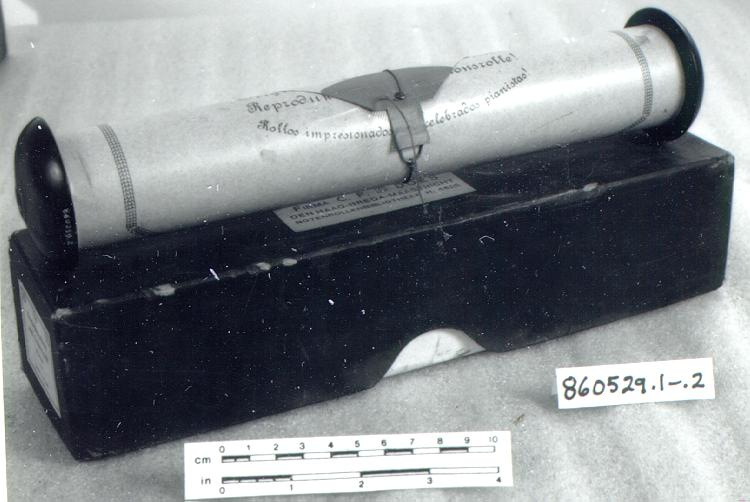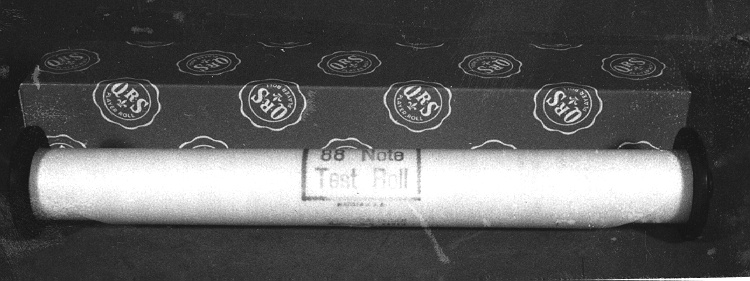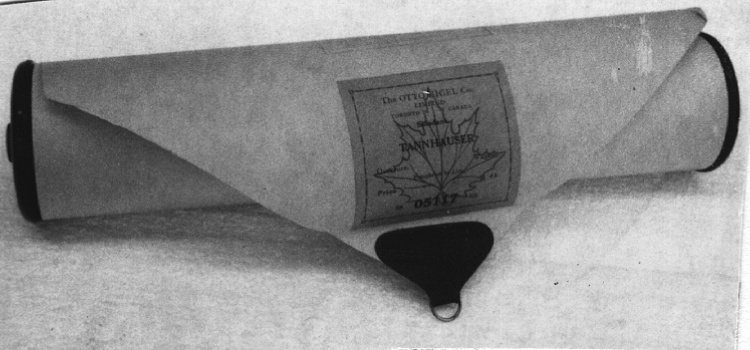Lid, box
Use this image
Can I reuse this image without permission? Yes
Object images on the Ingenium Collection’s portal have the following Creative Commons license:
Copyright Ingenium / CC BY-NC-ND (Attribution-NonCommercial 4.0 International (CC BY-NC 4.0)
ATTRIBUTE THIS IMAGE
Ingenium,
2006.0221.002
Permalink:
Ingenium is releasing this image under the Creative Commons licensing framework, and encourages downloading and reuse for non-commercial purposes. Please acknowledge Ingenium and cite the artifact number.
DOWNLOAD IMAGEPURCHASE THIS IMAGE
This image is free for non-commercial use.
For commercial use, please consult our Reproduction Fees and contact us to purchase the image.
- OBJECT TYPE
- Player piano roll
- DATE
- Unknown
- ARTIFACT NUMBER
- 2006.0221.002
- MANUFACTURER
- VOCALSTYLE MUSIC CO.
- MODEL
- Turkey in the Straw
- LOCATION
- Cincinnati, Ohio, United States of America
More Information
General Information
- Serial #
- N/A
- Part Number
- 2
- Total Parts
- 3
- AKA
- N/A
- Patents
- N/A
- General Description
- Paper; paperboard; ink; adhesive.
Dimensions
Note: These reflect the general size for storage and are not necessarily representative of the object's true dimensions.
- Length
- 36.5 cm
- Width
- 6.0 cm
- Height
- 7.0 cm
- Thickness
- N/A
- Weight
- N/A
- Diameter
- N/A
- Volume
- N/A
Lexicon
- Group
- Communications
- Category
- Music
- Sub-Category
- N/A
Manufacturer
- AKA
- VOCALSTYLE
- Country
- United States of America
- State/Province
- Ohio
- City
- Cincinnati
Context
- Country
- Canada
- State/Province
- Quebec
- Period
- The player piano that accompanies this artifact was purchased in 1915 and was last used in the late 1980s or the early 1990s.
- Canada
-
Until the beginning of the 20th century, musical education in Canada was mostly accessible for upper and upper middle-class families. Exported pianos were expensive, and although the Canadian piano manufacturing industry steadily grew throughout the 19th century, locally made pianos were often regarded as inferior to European instruments. However, at the start of the 20th century, the trade experts noted a strong improvement in the quality of the Canadian-made pianos and a shift in the ratio of imported versus exported pianos. During the first two decades of the 20th century, the interest in music instruments among the Canadian middle class exploded. The phenomenon was due not only to the improving quality of the locally manufactured instruments, but it was also the result of the “Piano in Every Parlor” and “Music in the Home” campaigns organized but the Canadian Piano and Organ Manufacturers’ Association. These promotions, organized by 23 major piano manufacturers, were intended to improve the sales of brand name pianos, organs, and various mechanical musical instruments. Yet, as still not everyone could afford music lessons or a sophisticated reproducing piano, the campaigns opened a large market for lower-quality, less expensive player pianos. From 1900 to 1912, the number of Canadian piano manufacturers had more than doubled, from 12,000 to 30,000. However, most of the new manufacturers were in fact only retailers who sold the so-called “stencil piano”, an inexpensive instrument with standard specifications produced in large numbers and sold under company names made-up by storekeepers. - Function
-
A box used to store a player piano roll which is used to play music when placed inside the piano action of a player piano. - Technical
-
Although the first experiments with mechanical musical instruments go back to the 13th and the 14th centuries, the first player piano as we know it was developed by Henri Fourneaux in 1863, called the “Pianista”, and commercialized in 1890 with Votey’s “Pianola”. At the start of the 20th century, the player piano became the most common automatic musical instrument, and faced close competition against the phonograph on the home entertainment market. Its popularity declined in the 1930s when the radio started to replace live music. Most of the Canadian player pianos were made by local piano manufacturers, who based the new instruments on their grand or upright pianos. At the beginning of the 20th century, the best-known Canadian player piano makers included L.E.N. Pratter, Heintzman, Martin-Orme, Mason & Risch, Organ Co. and Bell Piano. Although player pianos were less expensive than reproducing pianos, which claimed to mimic pianists’ technical skills, not everyone was able to afford a brand name player piano such as a Prattola or a Mason & Risch. Some manufacturers offered player pianos furnished with standard mechanism, keyboards, and cabinets of slightly lower quality than brand name pianos. These instruments were purchased in large quantities by retailers who would stencil their names on the fallboard. The player piano this roll accompanies is furnished with a standard Otto Higel piano action, an important Canadian-made action that was used by many player piano manufacturers around the world and typically found in stencil player pianos. - Area Notes
-
Unknown
Details
- Markings
- Lettering on label on front reads: “Vocalstyle/(PATENTED)/Hand Played Roll/10991 .85/Turkey in the Straw/(Jigg) Key of F/By Otto Bonnell/Played by Allison & Esberger/THE VOCALSTYLE MUSIC CO./CINCINNATI 88 NOTE OHIO, U.S.A.”; lettering in dark pencil lead on same label reads: “69”.
- Missing
- The artifact appears complete.
- Finish
- Black layer of paper; brown-yellow paperboard; yellow label with black lettering.
- Decoration
- No decoration.
CITE THIS OBJECT
If you choose to share our information about this collection object, please cite:
VOCALSTYLE MUSIC CO., Lid, box, Unknown Date, Artifact no. 2006.0221, Ingenium – Canada’s Museums of Science and Innovation, http://collection.ingeniumcanada.org/en/id/2006.0221.002/
FEEDBACK
Submit a question or comment about this artifact.
More Like This
